One of the things we love about Guatemala is the brightly coloured traditional dress of the Mayan women. About 40% of Guatemala’s population is Mayan, and there are 21 different Mayan groups in the country. People say you can identify a woman’s home town or village by the colours and patterns of her skirt (corte) and her traditional blouse (huipil).
We could see the changes in traditional dress or traje as we drove through remote villages, town plazas, and central markets.
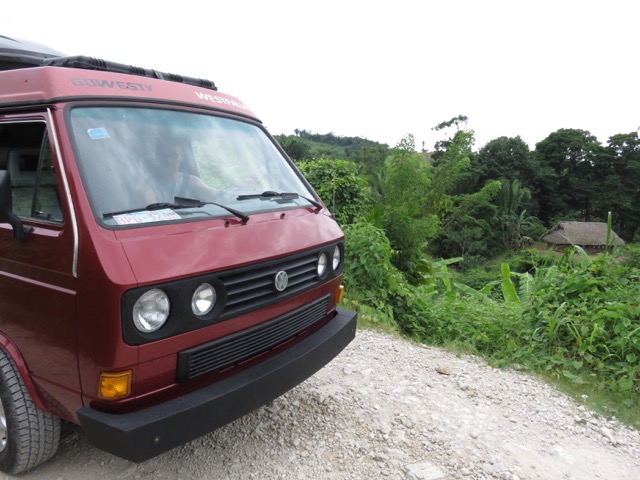
_____________________
Cobán
Department: Alta Verapaz
Elevation: 1,320 m (4,330 ft)
Population: ~250,700
Predominant Mayan group: Q’eqchi’
_____________________
Uspantan
Department: El Quiché
Elevation: 1,825 m (5,988 ft)
Population: ~4,200
Predominant Mayan group: Uspantek
_____________________
Santa Maria Nebaj
Department: El Quiché
Elevation: 1,900 m (6,200 ft)
Population: ~18,500
Predominant Mayan group: Ixil
Santa Maria Nebaj (‘Nebaj’ for short) is located in a valley within the highlands of the El Quiché department. Not surprisingly, the drive to get there was steep and curvy, but it was well worth the trip to see the traditional dress of the Ixil Mayan women.
Just as Gregor and I sat down in Nebaj’s central plaza, a funeral procession came through and flooded the church steps with a sea of red.
Many women use a multi-functional woven cloth called a tzute. The tzute comes in several sizes and can be used as a shawl, baby-carrier, basket-cover, or head-cover for church or for sun protection.
The hair wrap or cinta is typically the most intricate piece of a woman’s traje. In some villages, you can tell if a woman is single, married, or has children based on how the cinta is wrapped in her hair.
_____________________
Quetzaltenango
Department: Quetzaltenango
Elevation: 2,330 m (7,640 ft)
Population: ~225,000
Predominant Mayan group: Mam
Gregor and I participated in a backstrap weaving demonstration in Quetzaltenango (‘Xela’ for short, pronounced ‘Shay-la’). We wanted to get a feel for the amount of work required to create the fabrics and garments that we saw throughout the country.
It turns out that Gregor is a much better weaver than I am – I made lots of sloppy mistakes that would have surely gotten me expelled from any village weaving circle.
Thanks to the hands-on demo, we now have a new appreciation for the art of weaving. The process is picky and time consuming – for newbies like us, it would take up to 3 days to make a simple scarf.
The most labour intensive piece to weave is the huipil or traditional blouse of the Mayan woman. It can take up to six months to weave one huipil depending on the complexity of the design.
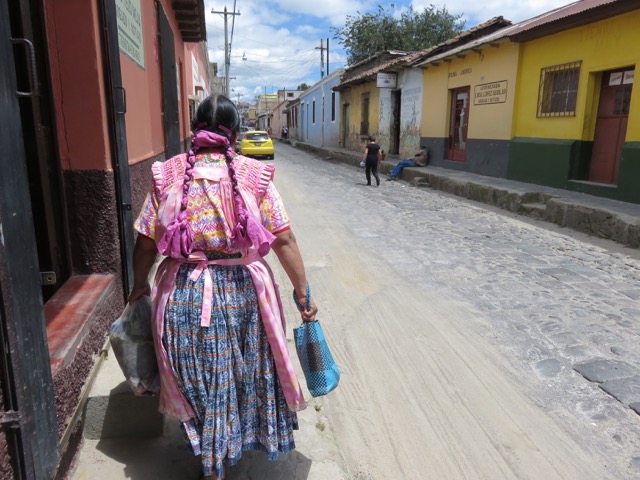
_____________________
San Juan La Laguna
Department: Solola
Elevation: 1,562 m (5,125 ft)
Population: ~13,000
Predominant Mayan group: Tz’utujil

San Juan is a small town on the shore of Lake Atitlan whose population is 95% Tz’utujil Mayan.
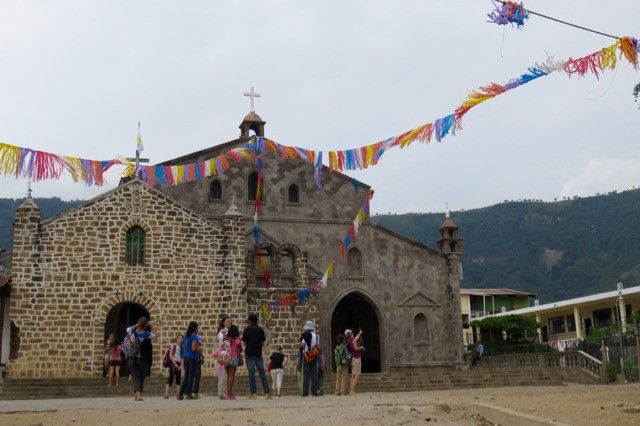
There are several weaving cooperatives in town that produce high-quality textiles at fair trade prices.
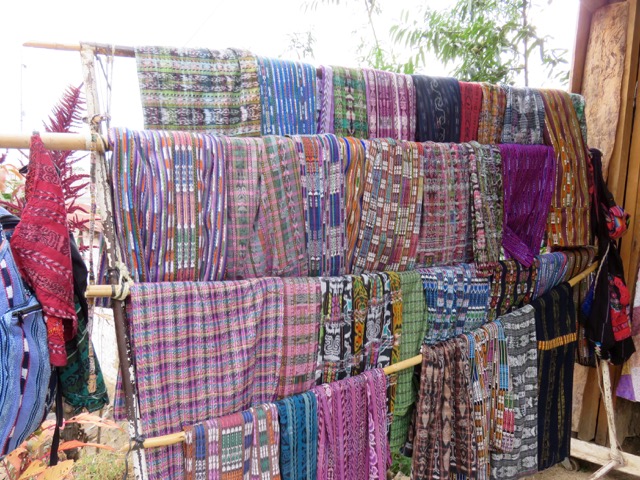
To hold up the traditional skirt or corte, many Mayan women wear intricately embroidered belts or fajas.
_____________________
Chichicastenango
Department: El Quiché
Elevation: 1,965 m (6,447 ft)
Population: ~45,500
Predominant Mayan group: K’iche
Teeming with colourful textiles and handicrafts, Chichicastenango’s Thursday and Sunday markets are a great place to pick up a little something for home. You need to bargain hard, though!
We bought this quilt at the Chichi Sunday market to remind us of the colourful textiles we saw on our travels.
After over 7 weeks in Guatemala, it was time to say goodbye. We’ll miss the colours, textures, and patterns that represent the country’s diverse people and beautiful landscape.

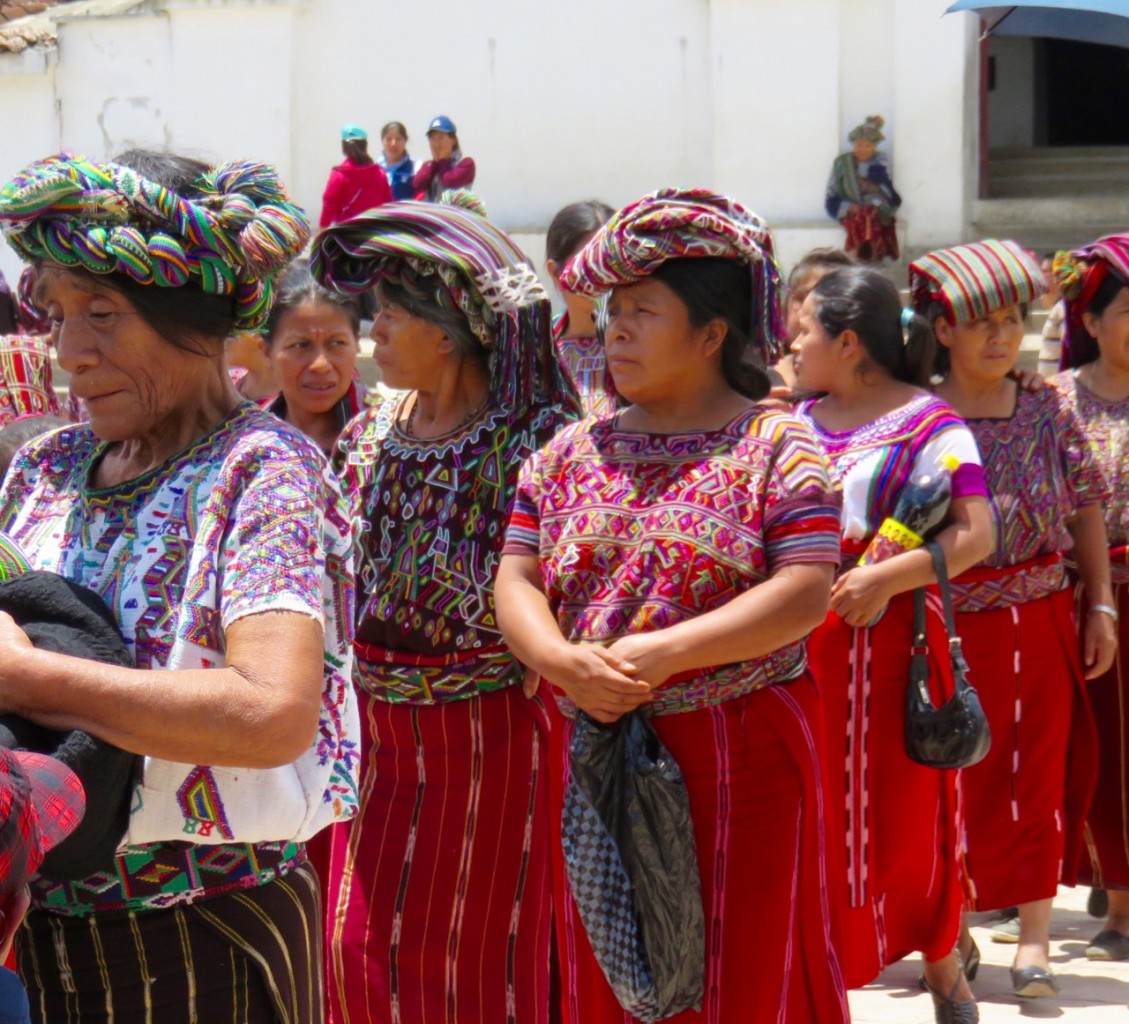
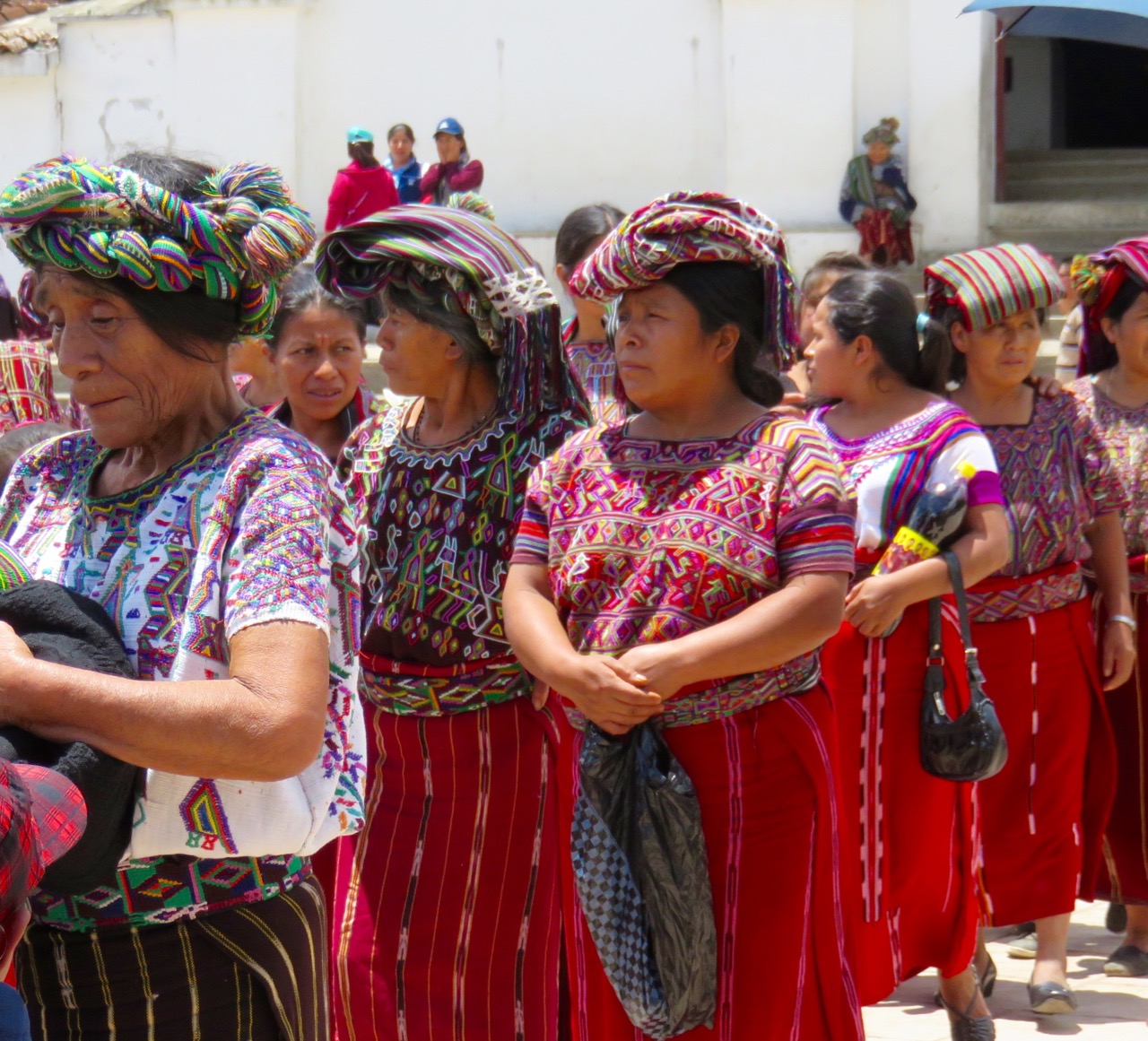
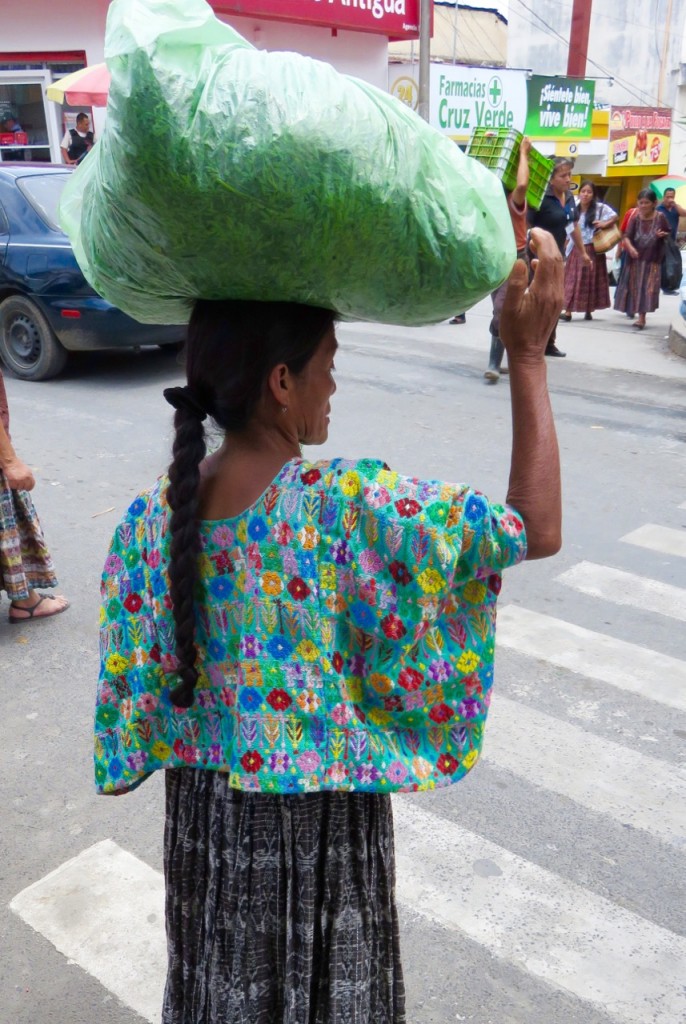
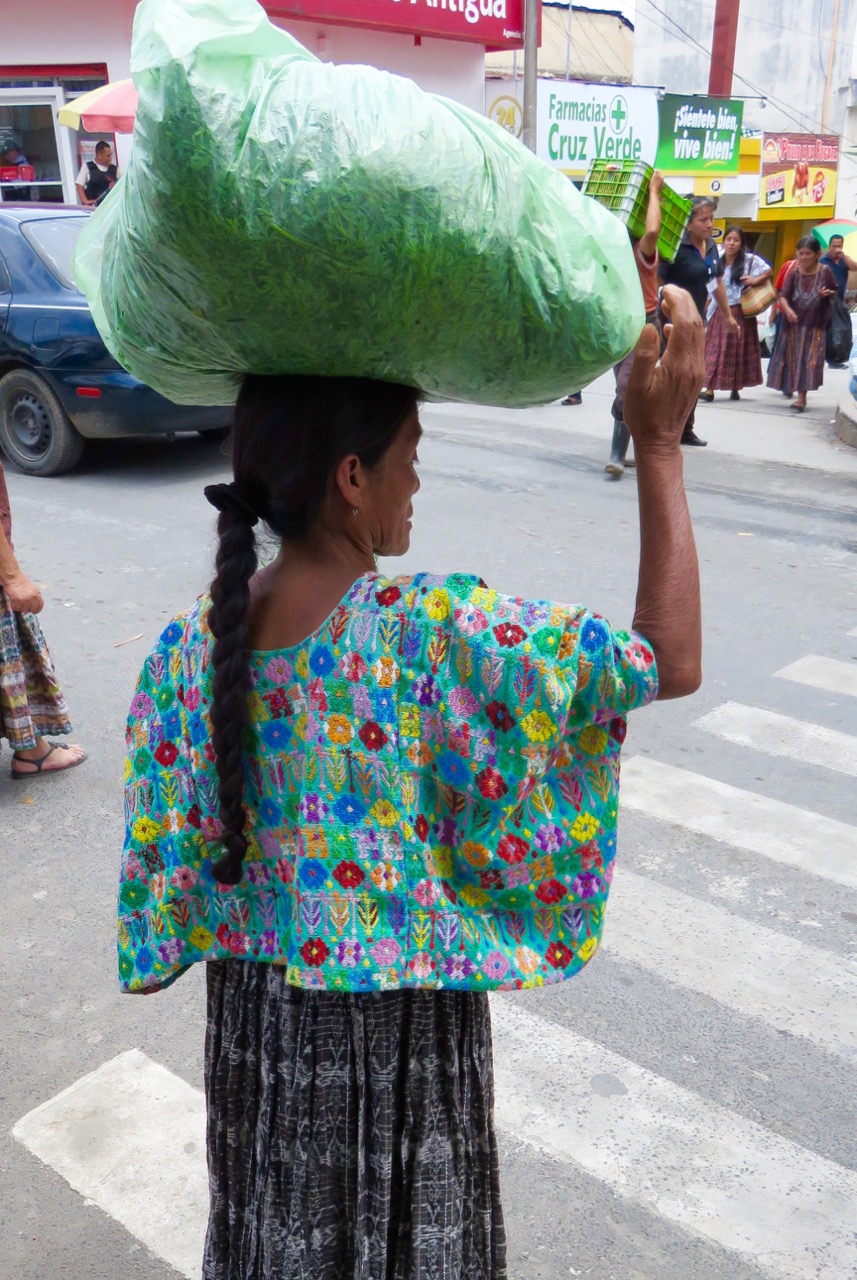
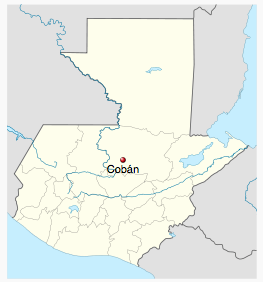
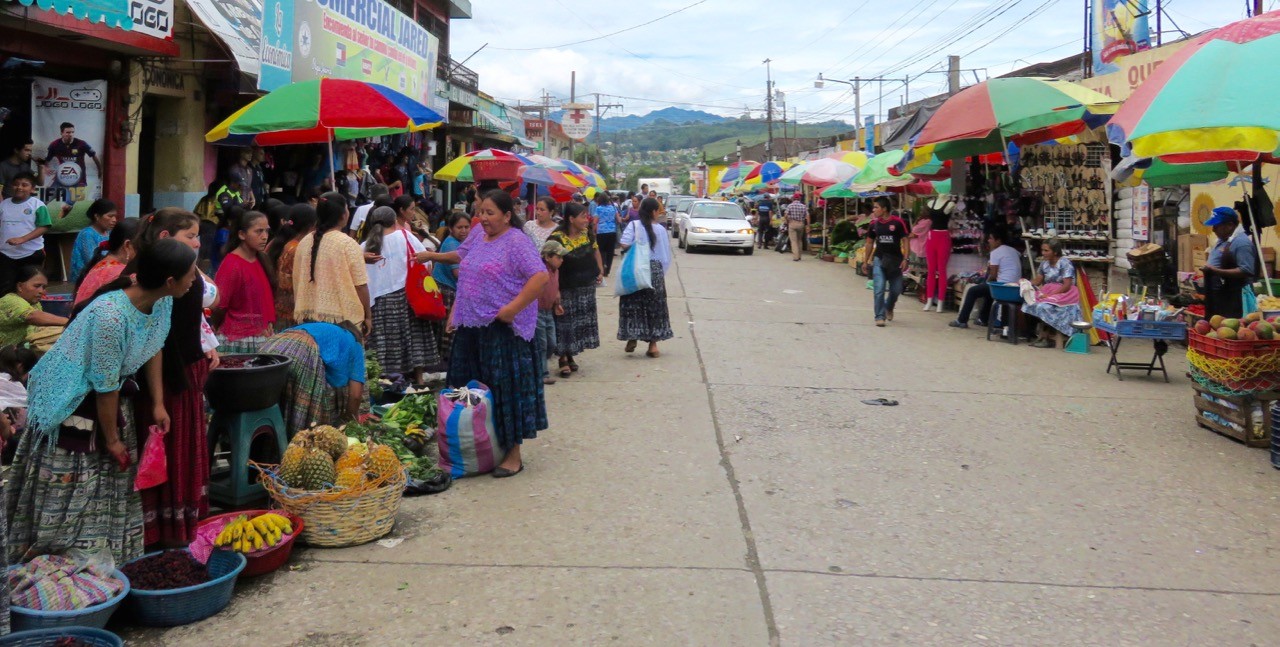
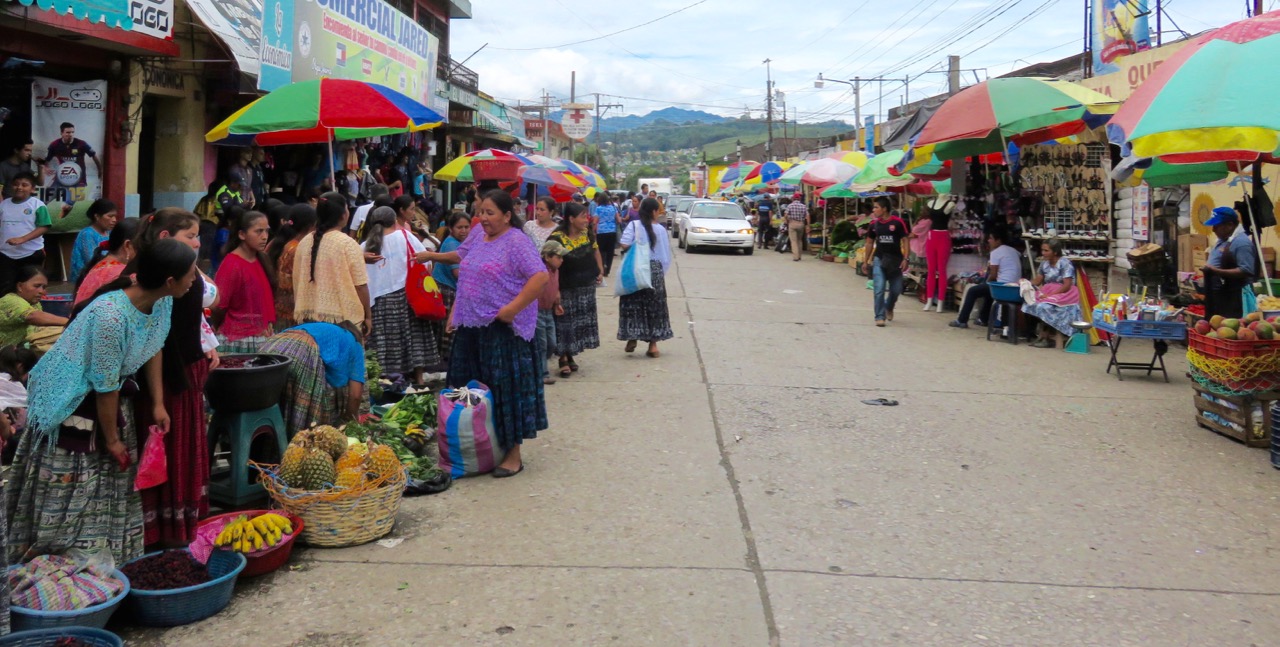
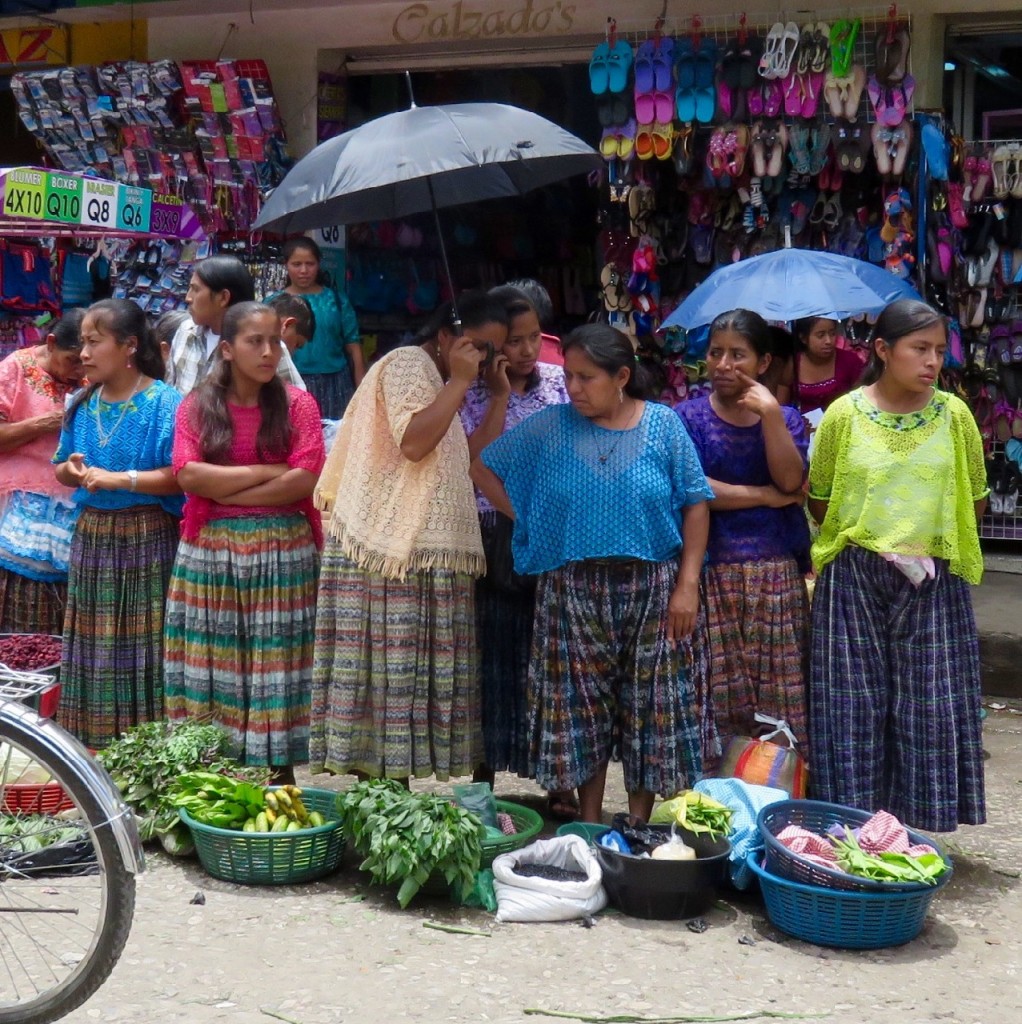
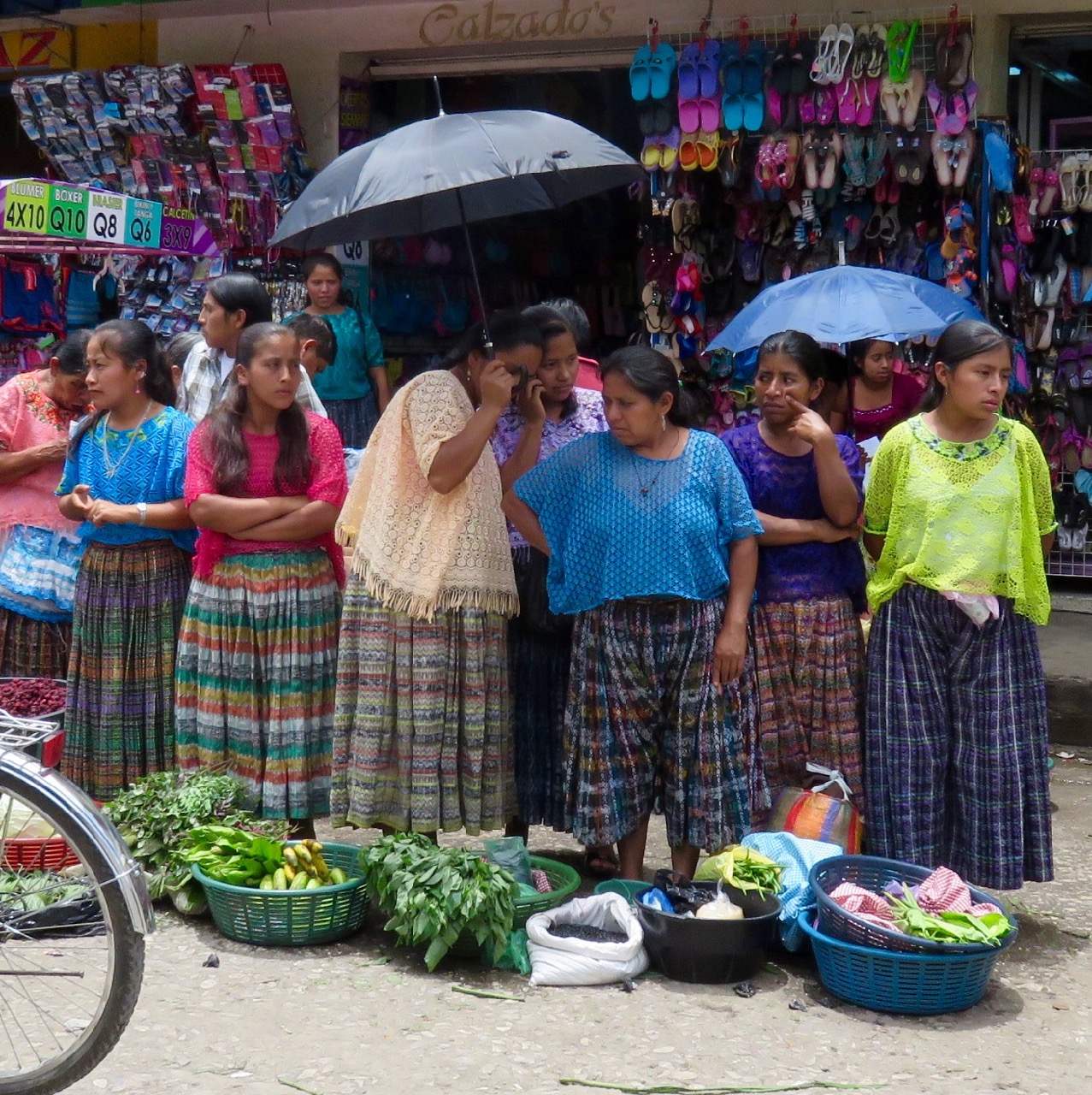
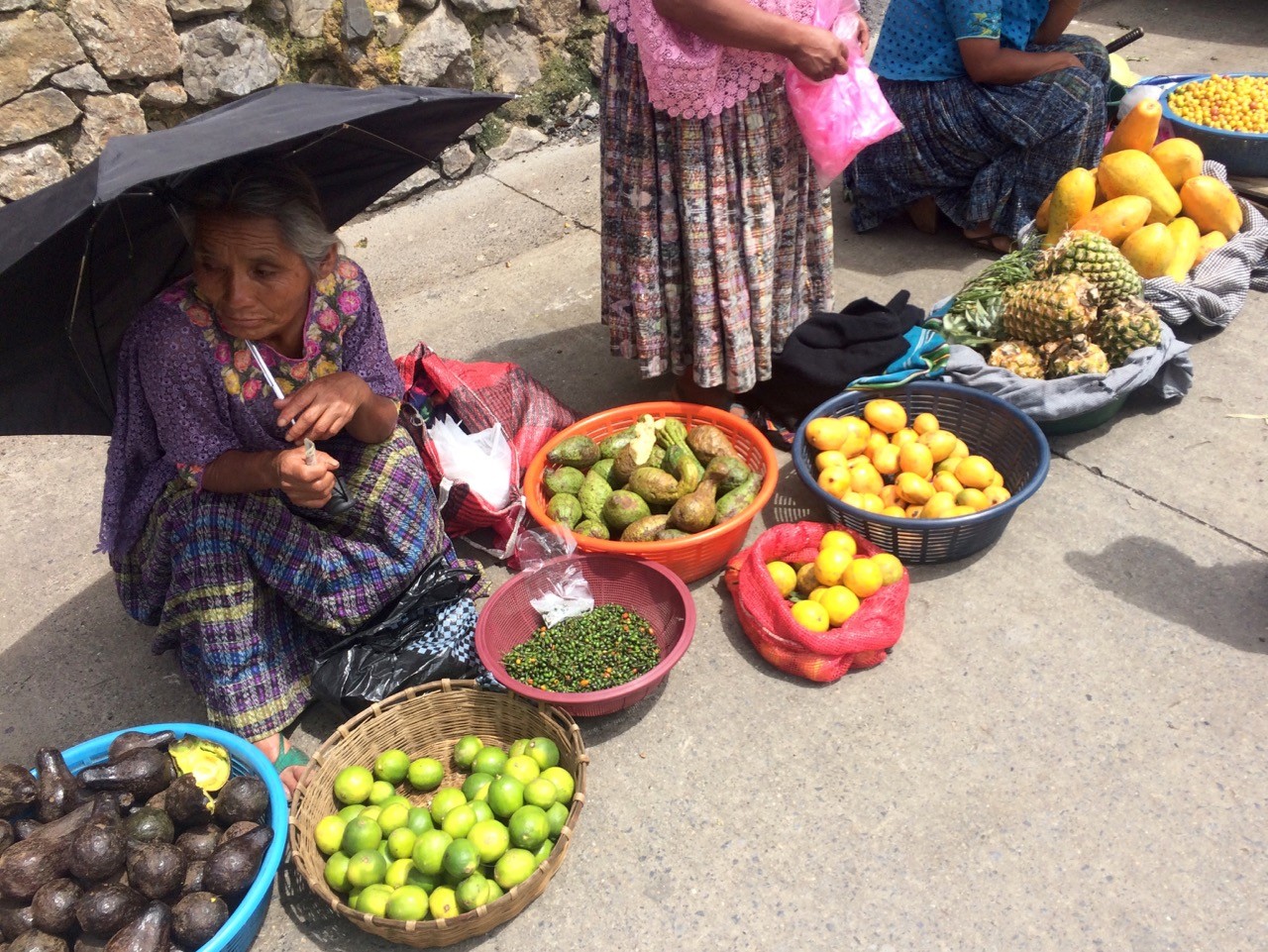
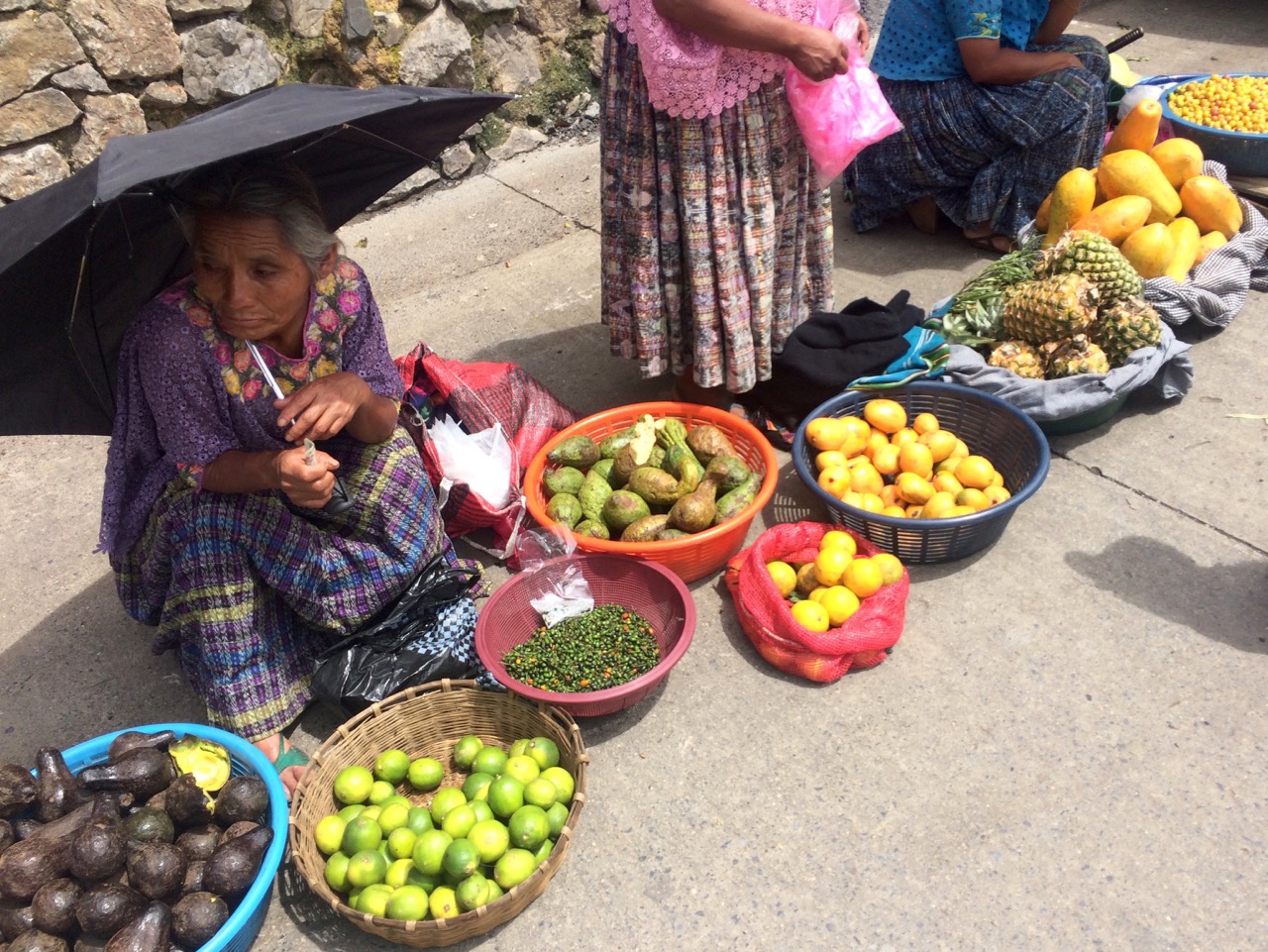
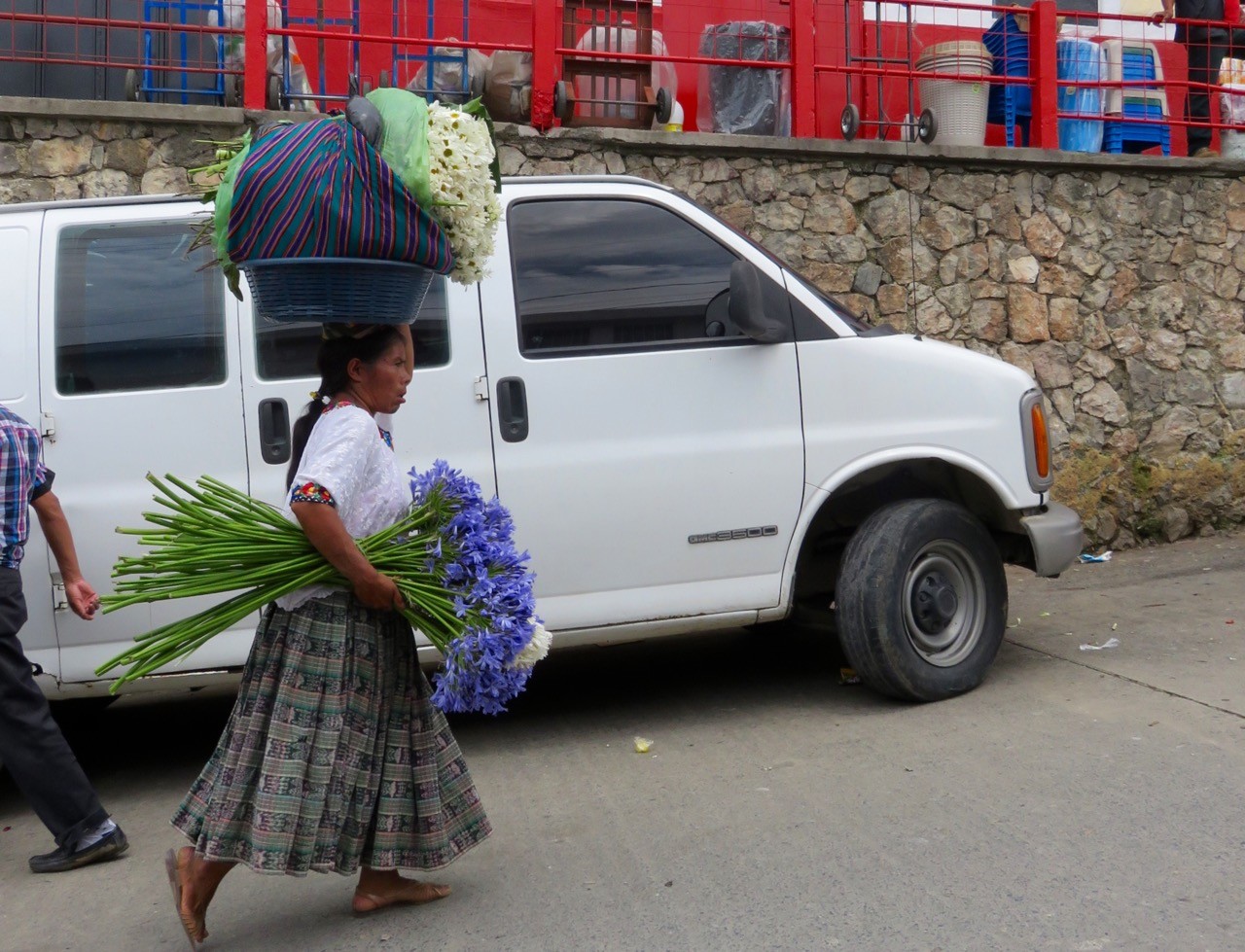
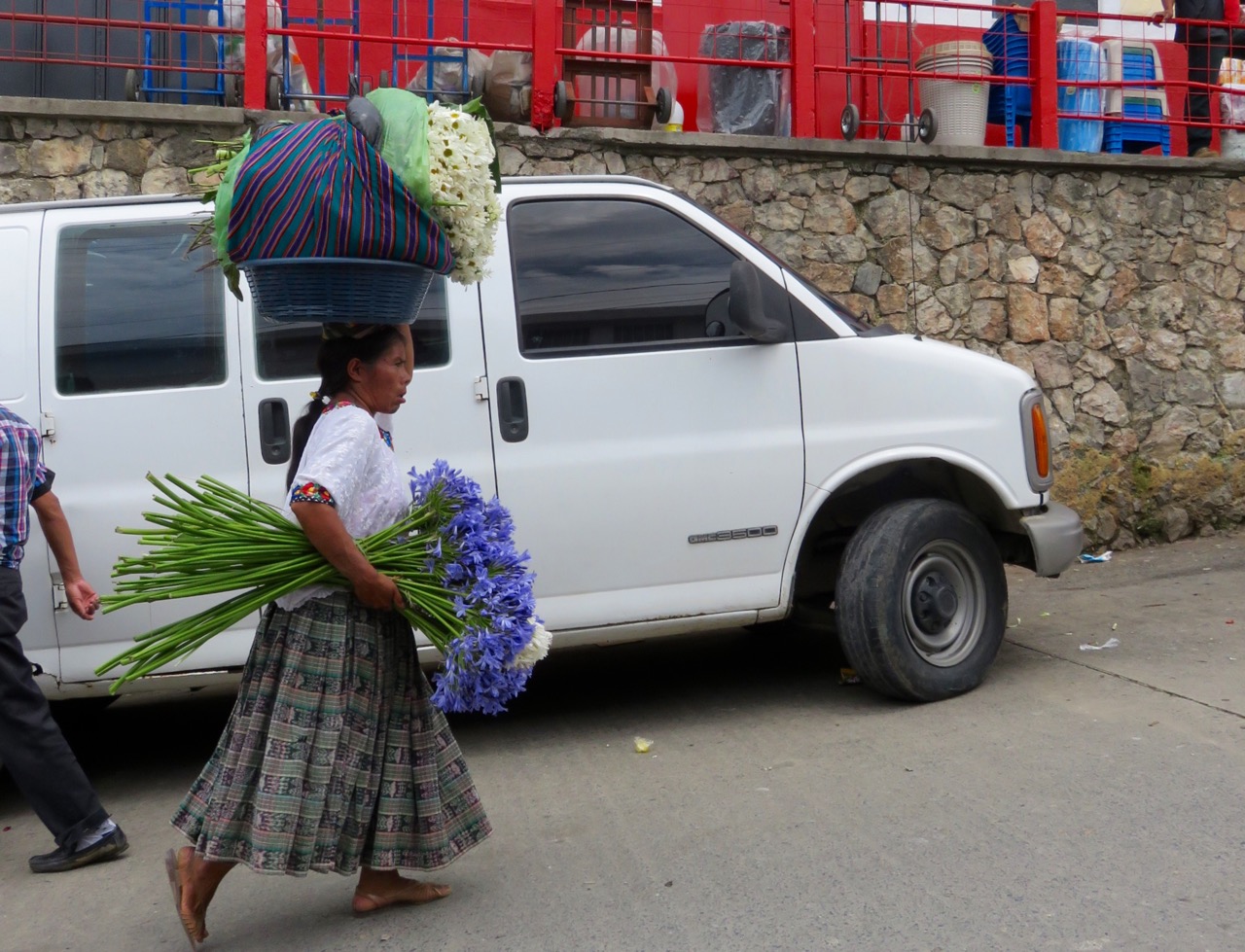
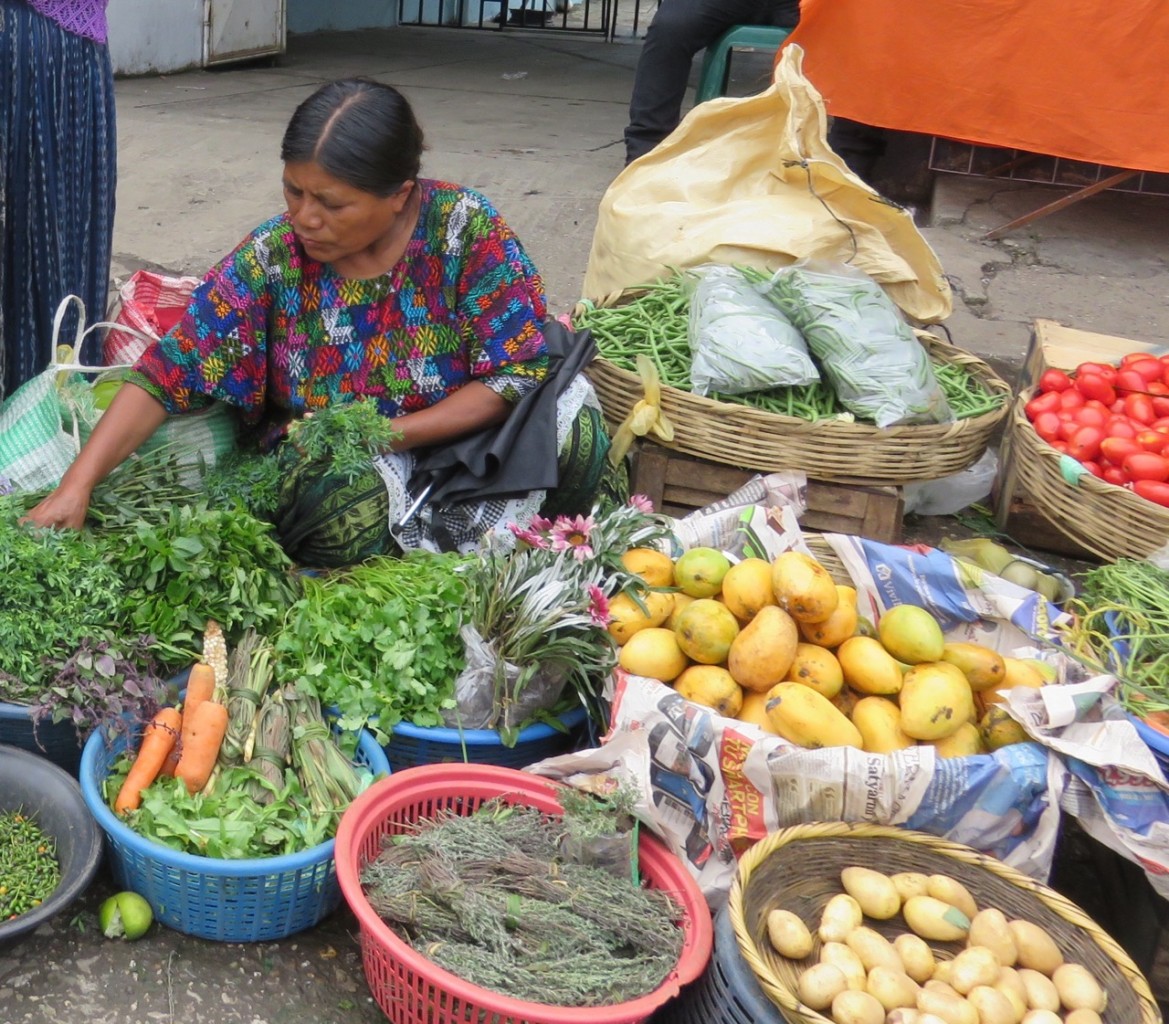
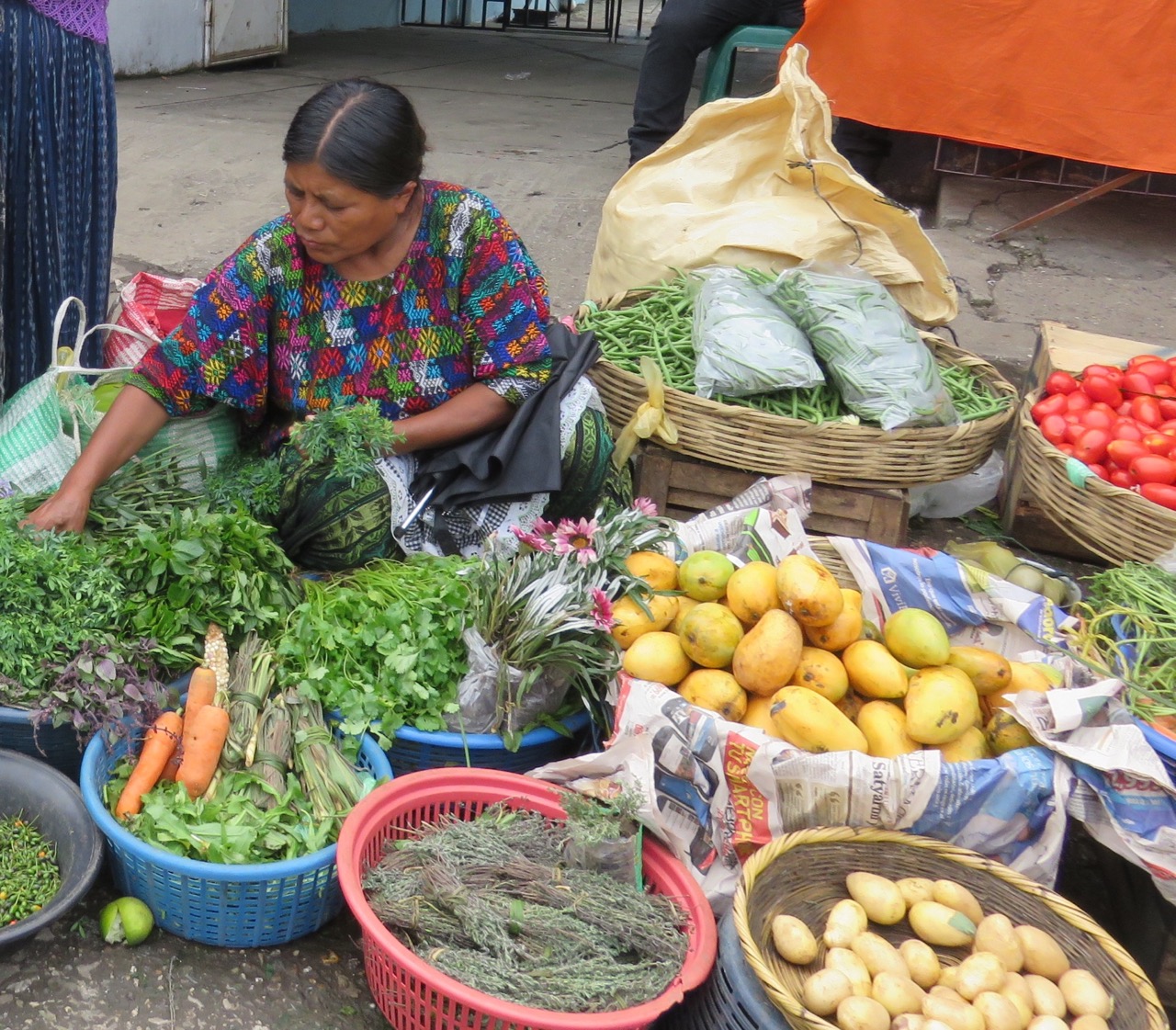
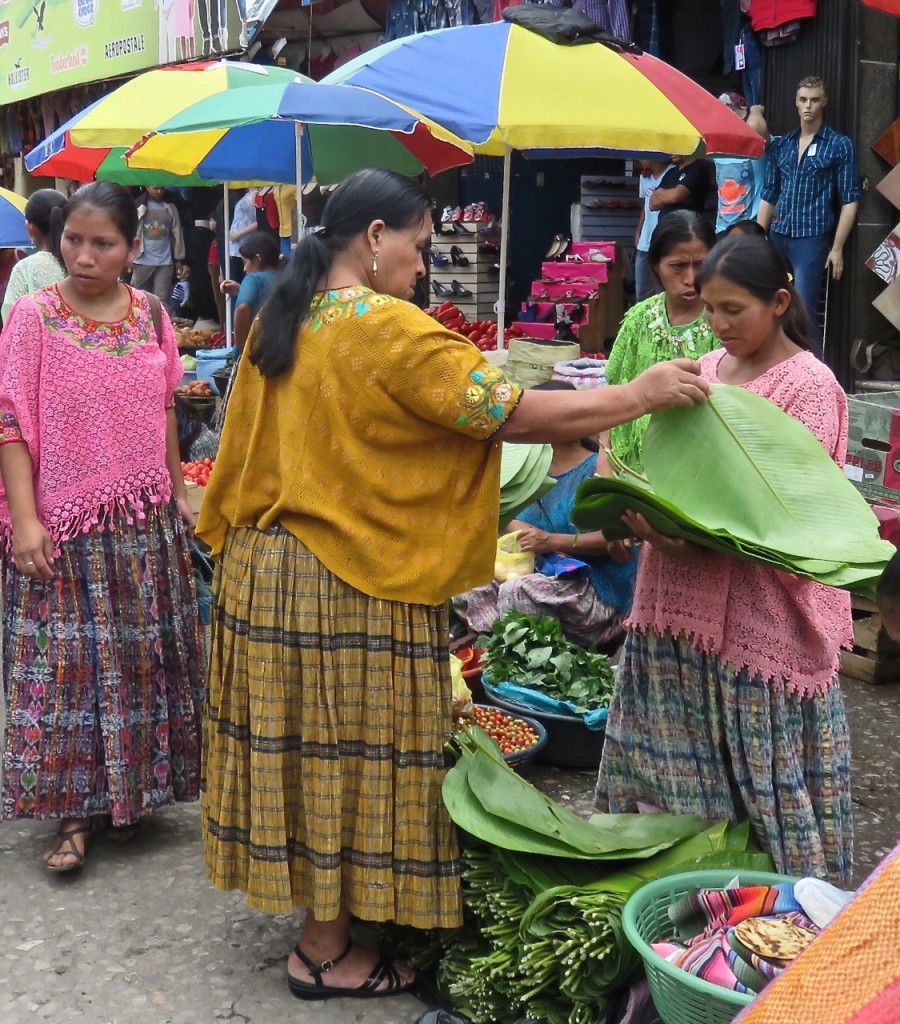
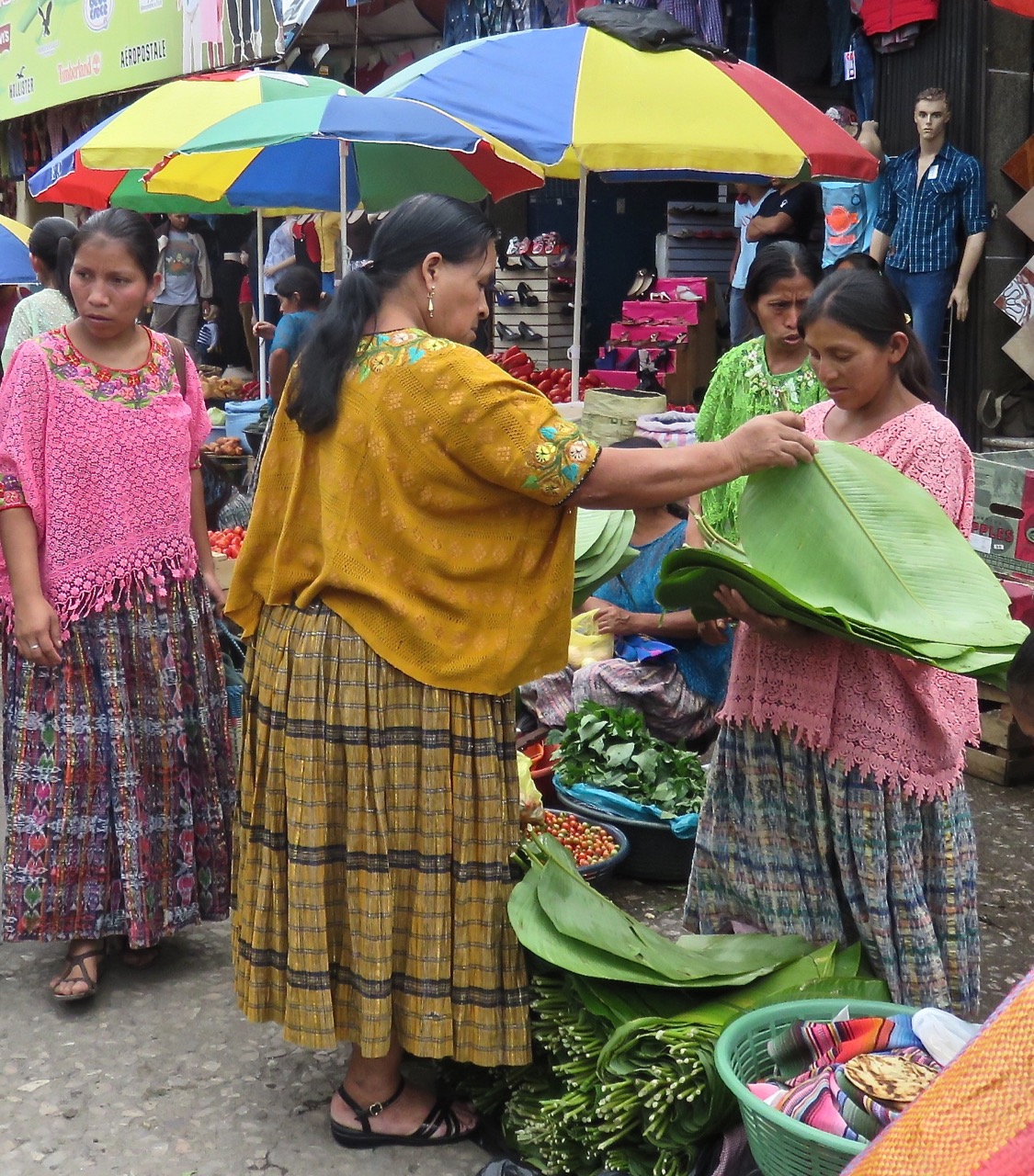
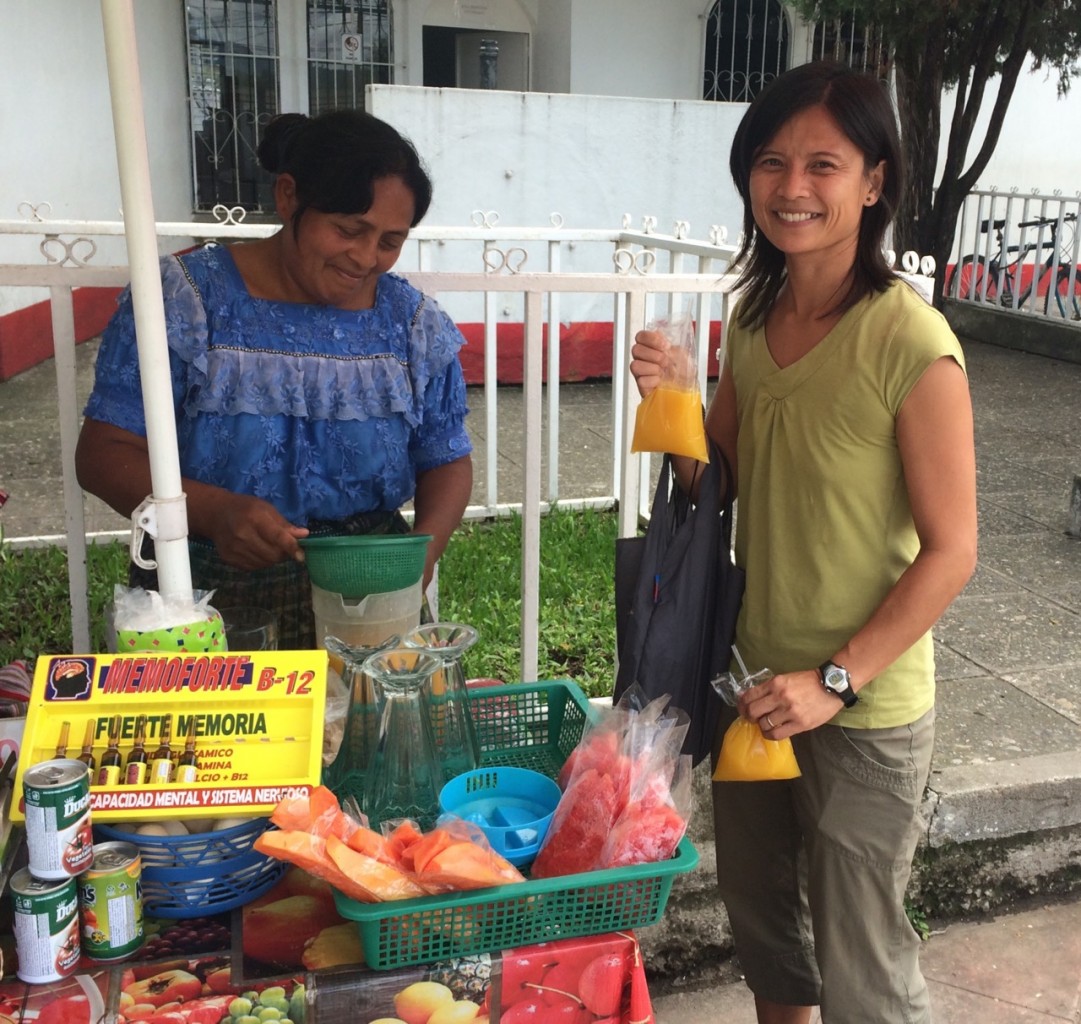
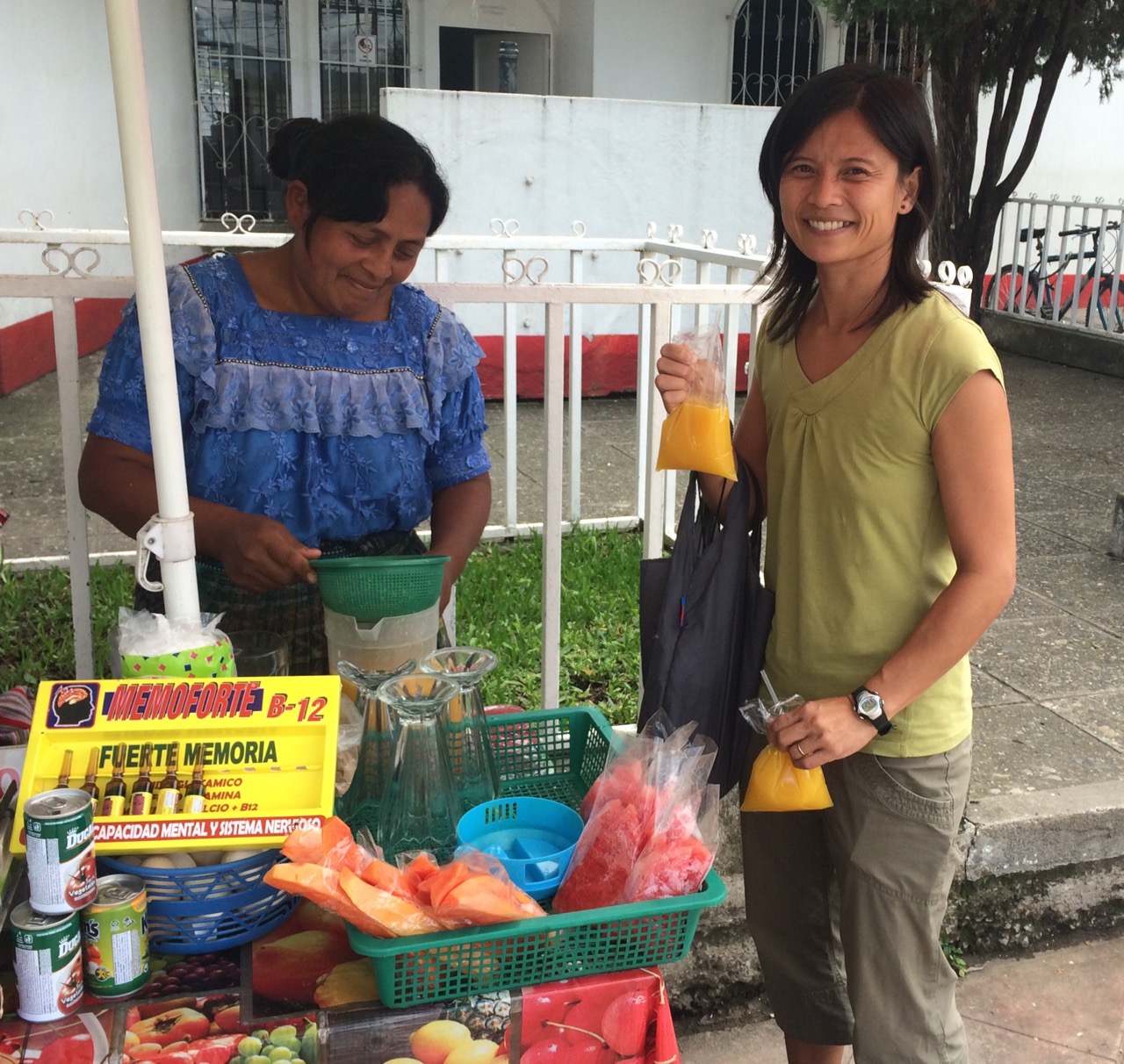
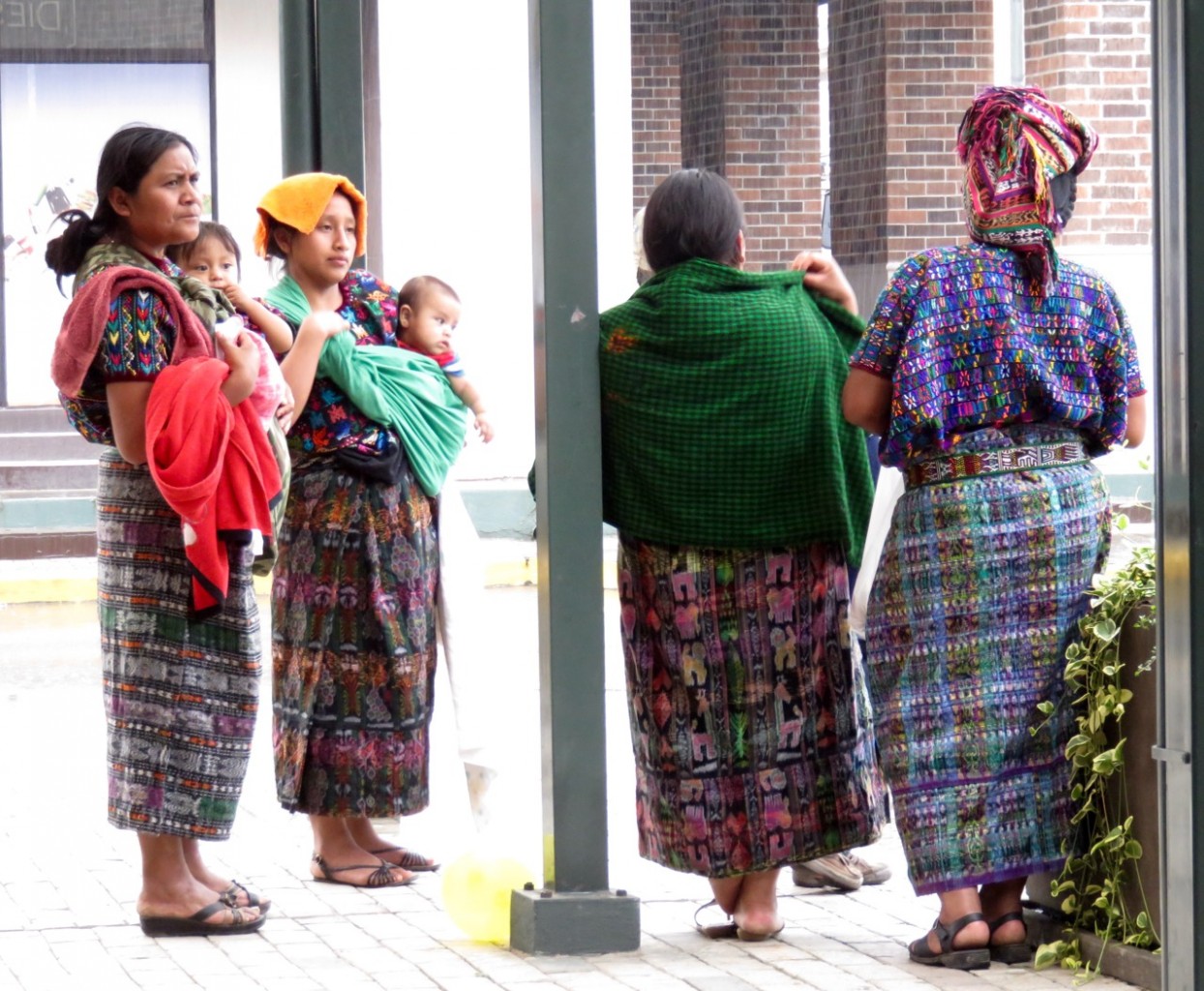
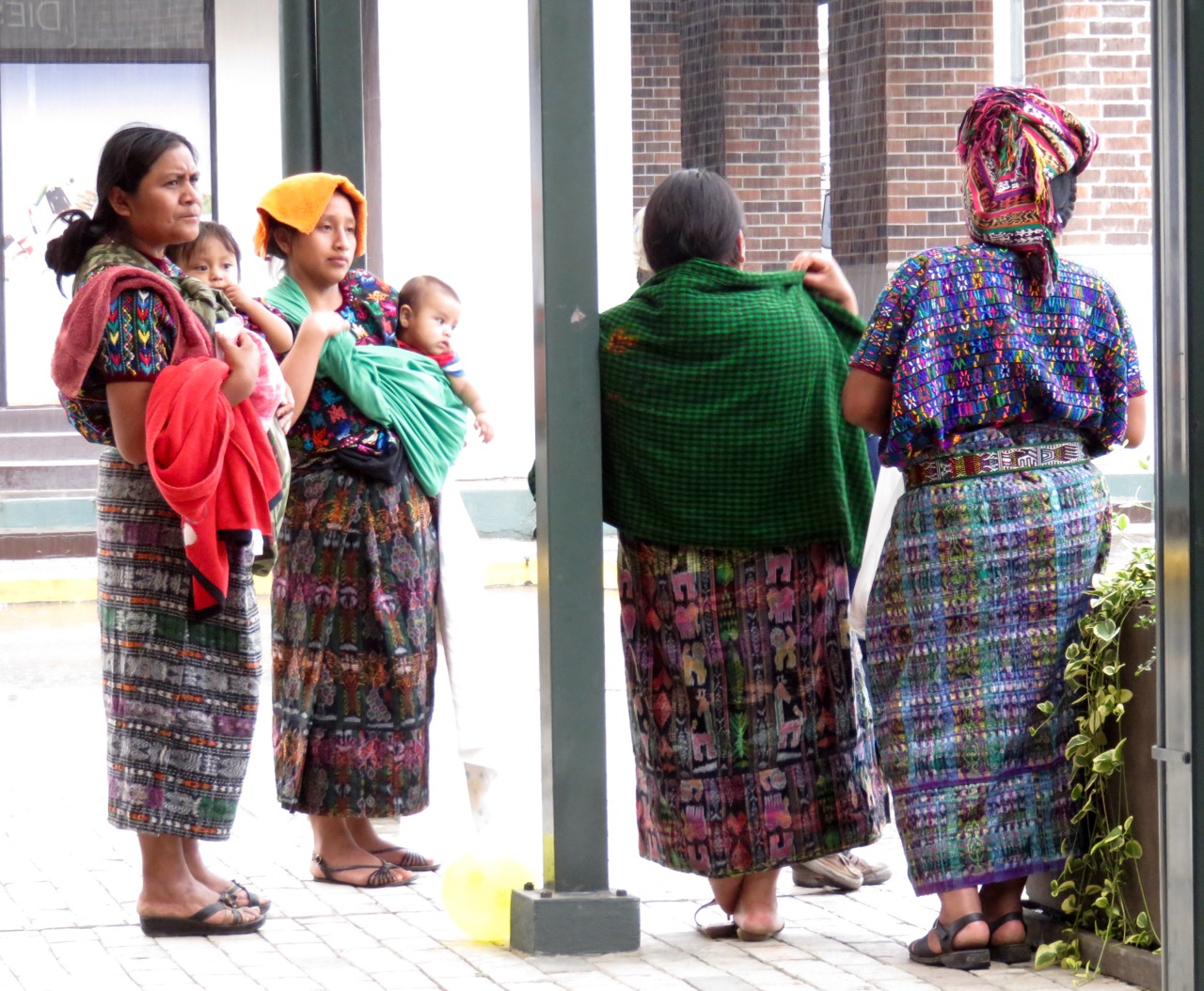
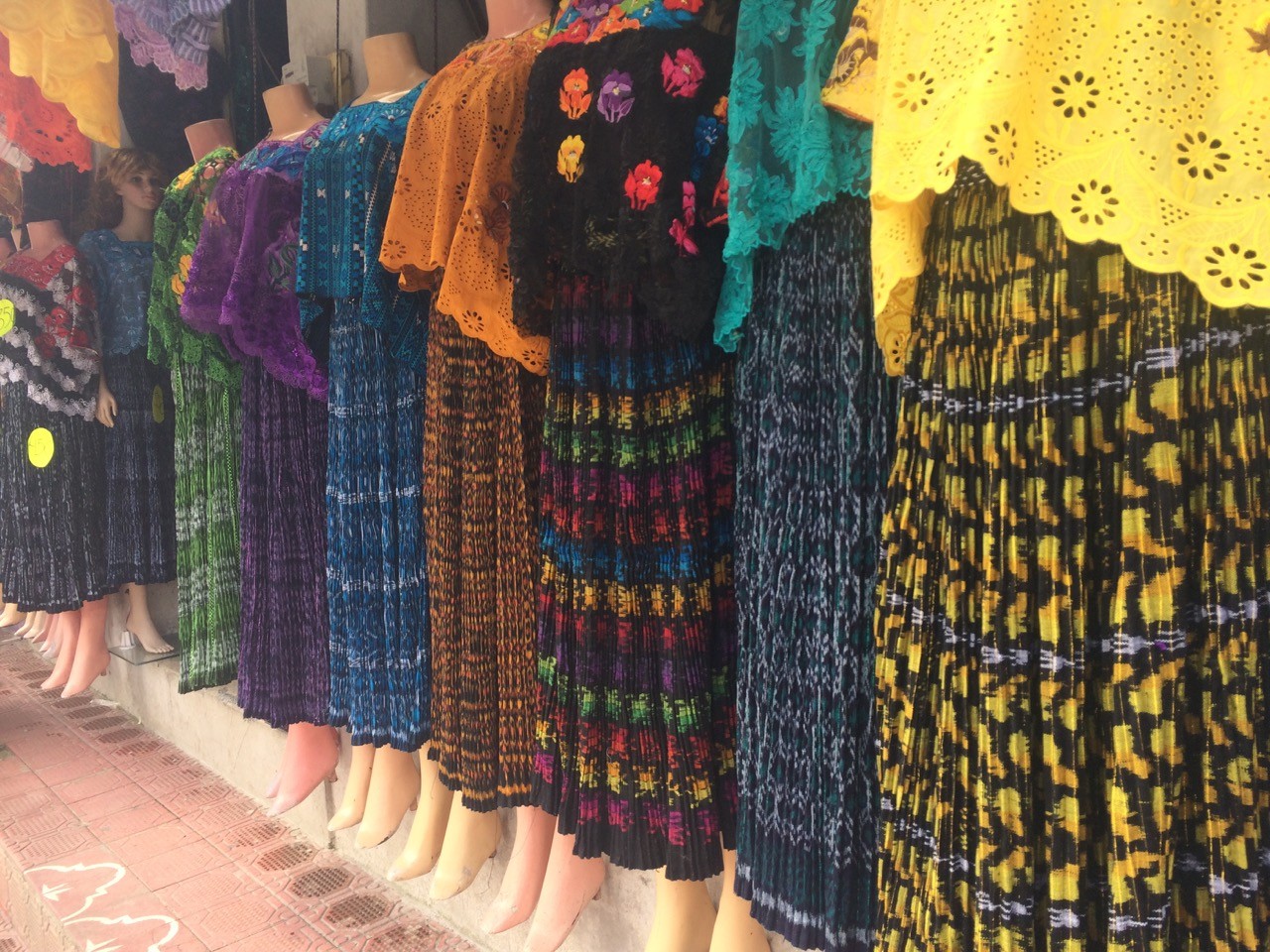
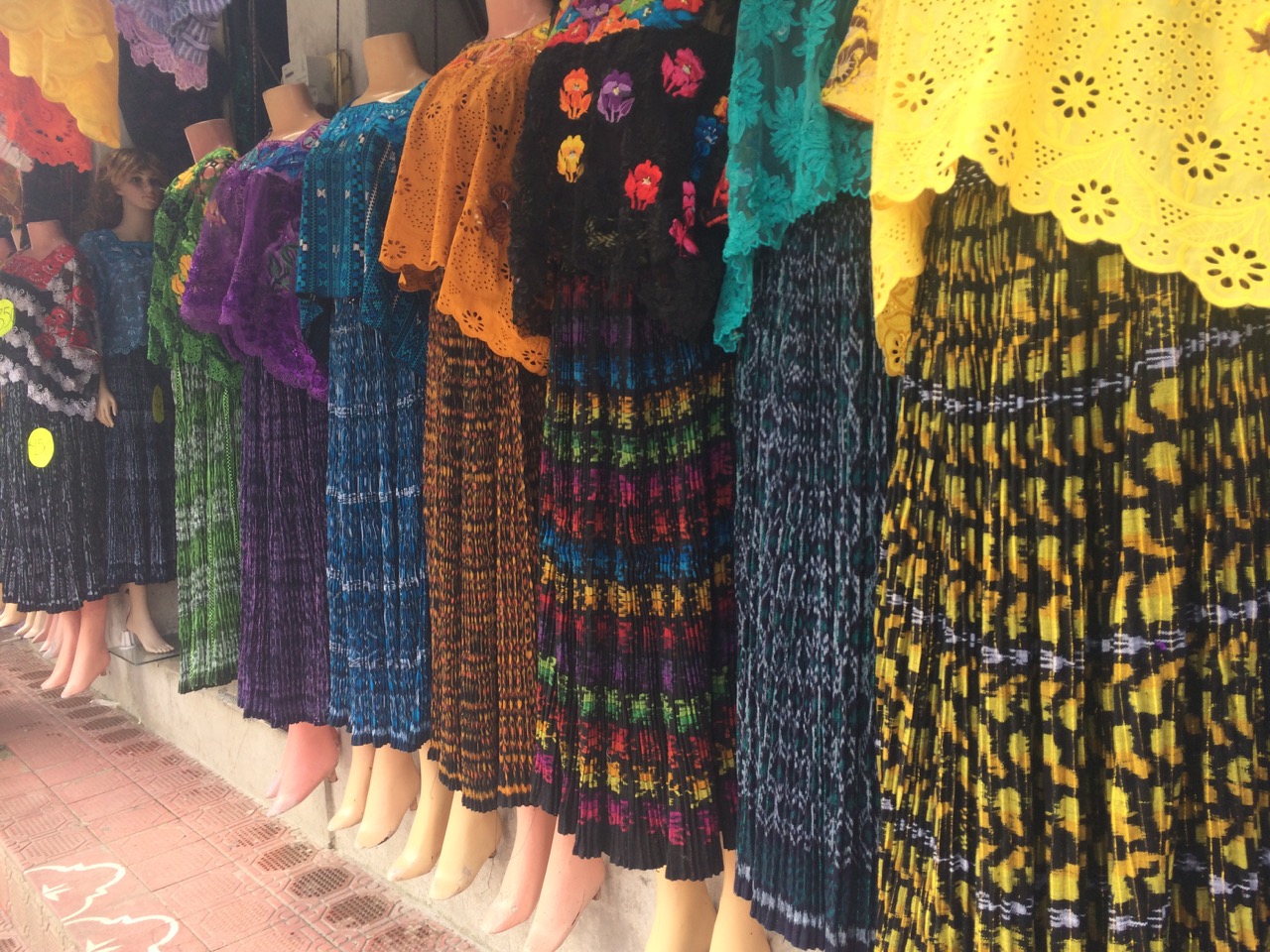
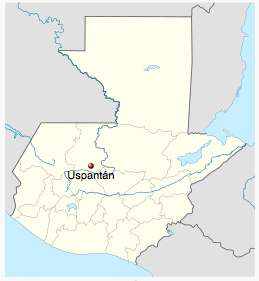
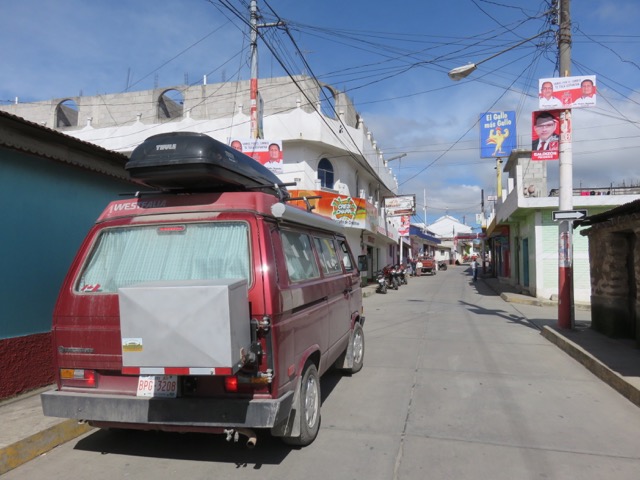
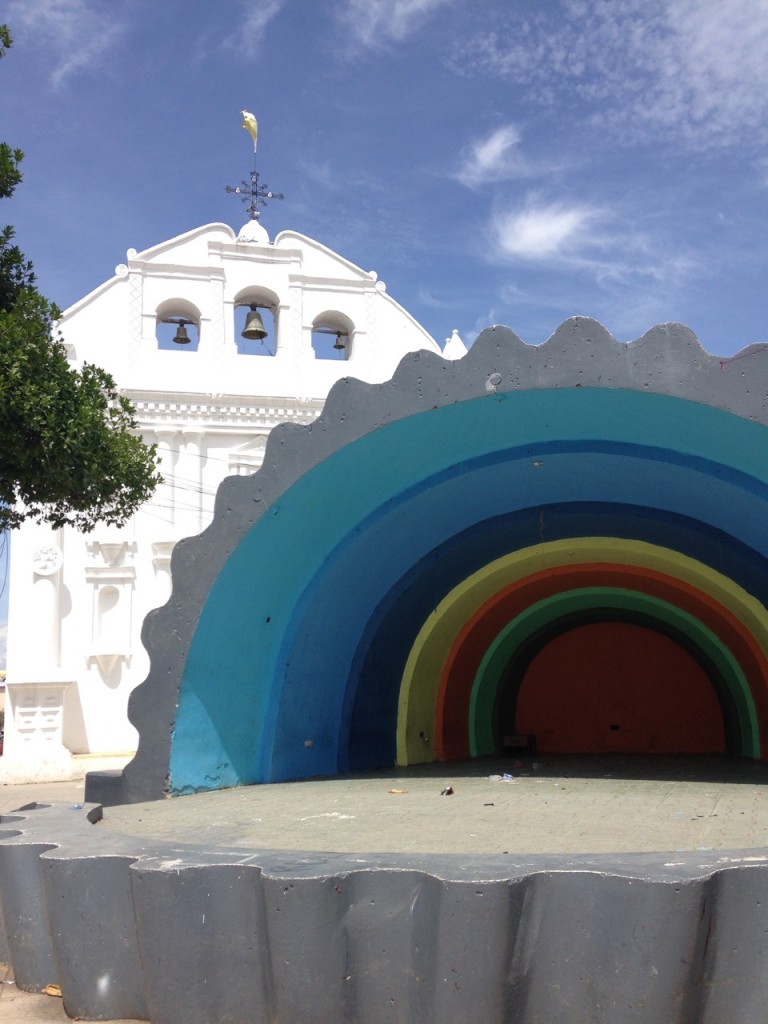
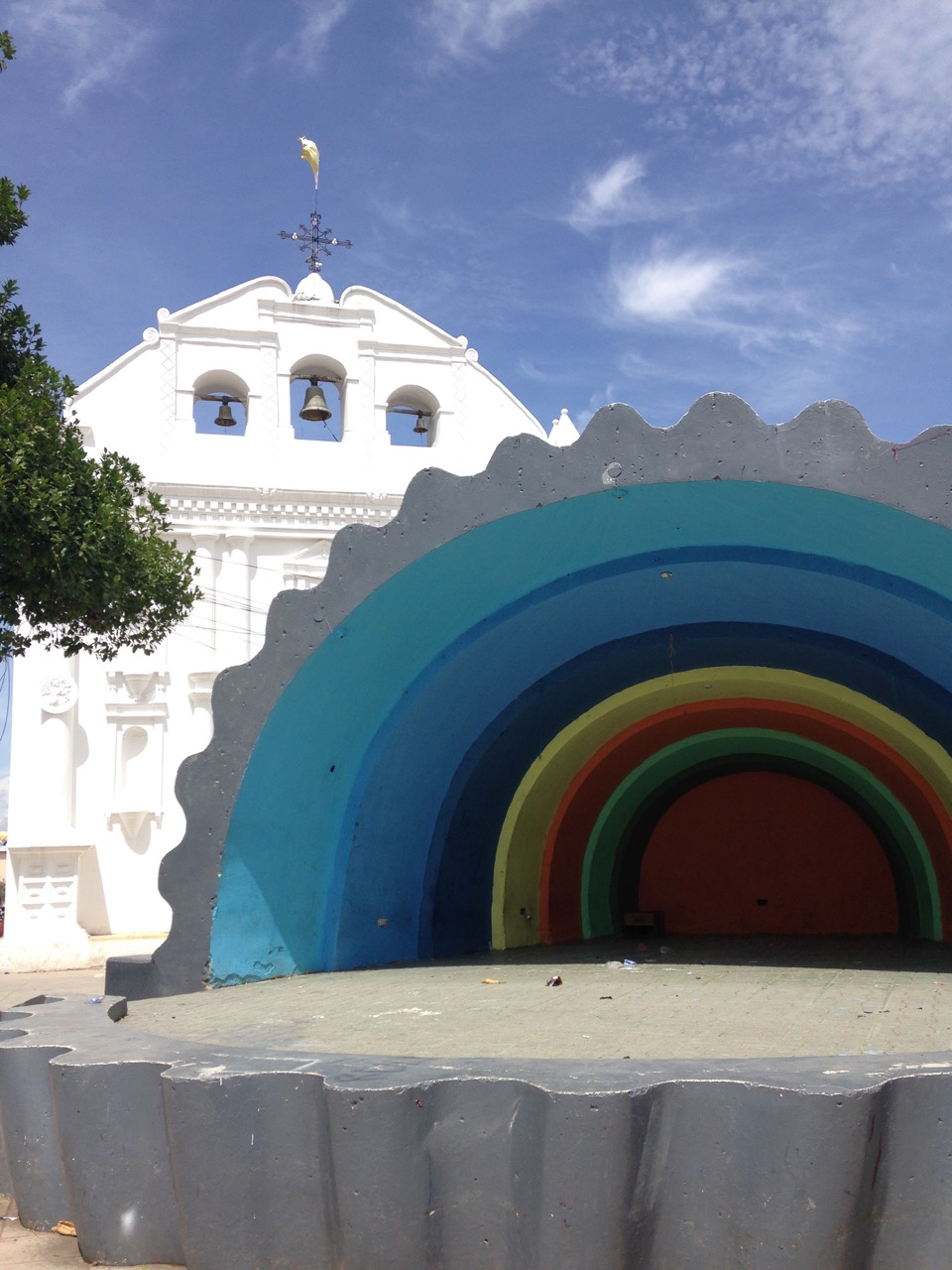
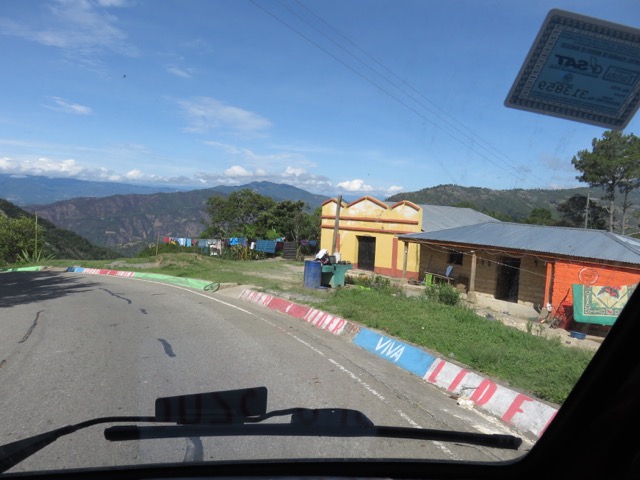
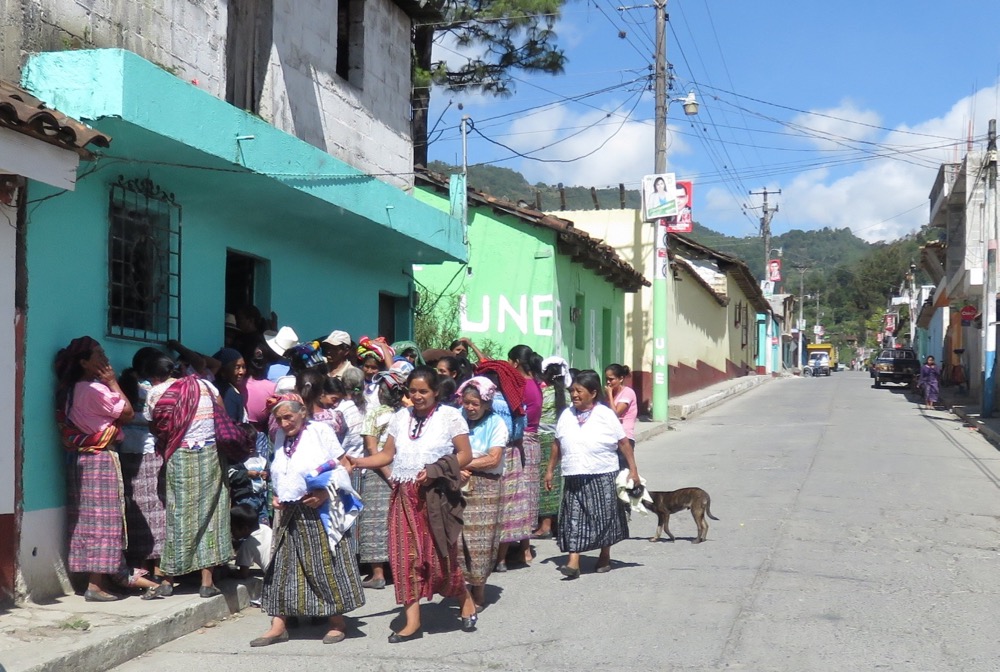

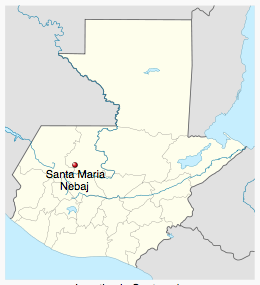
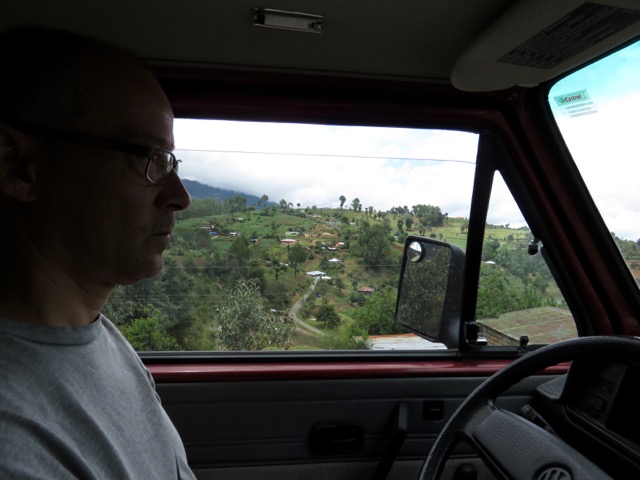
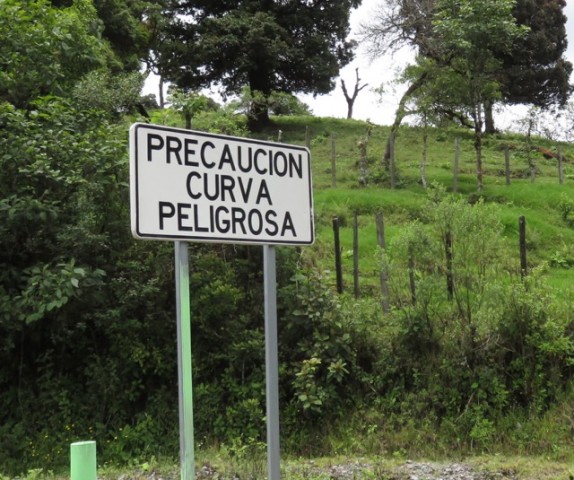
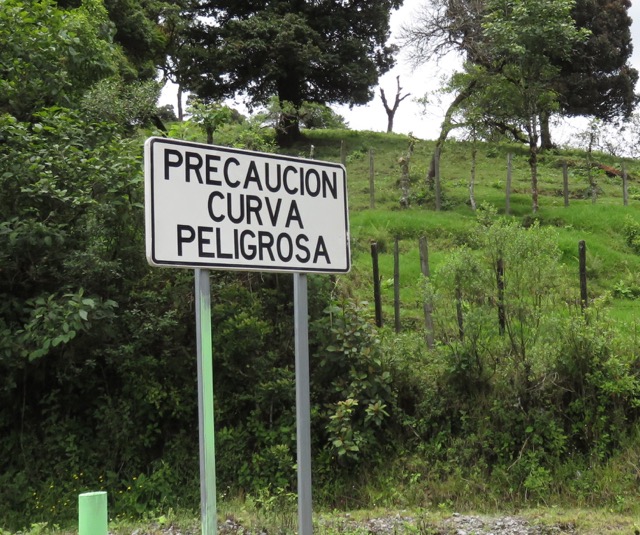
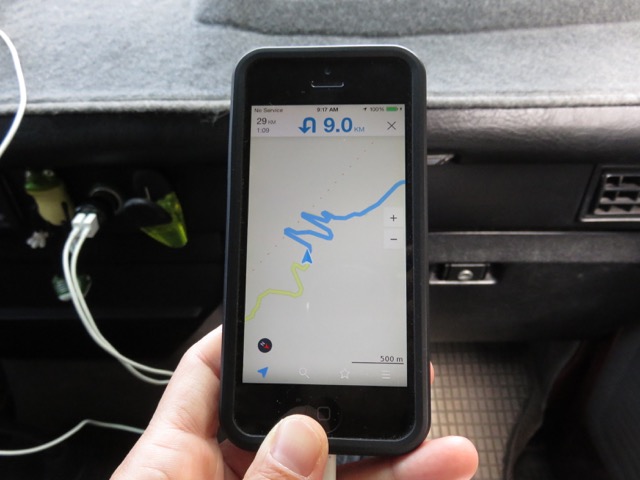
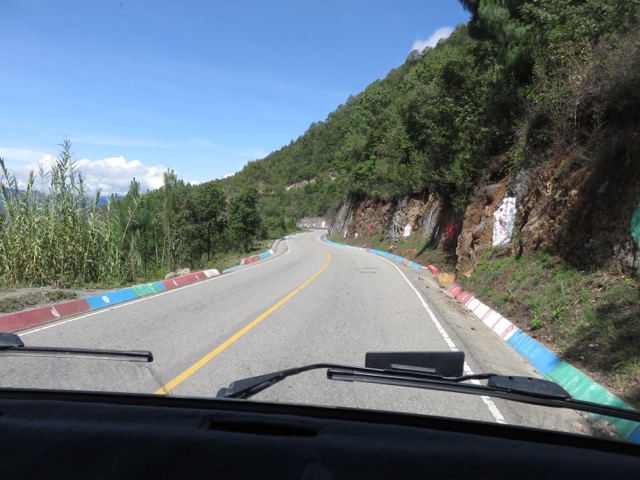
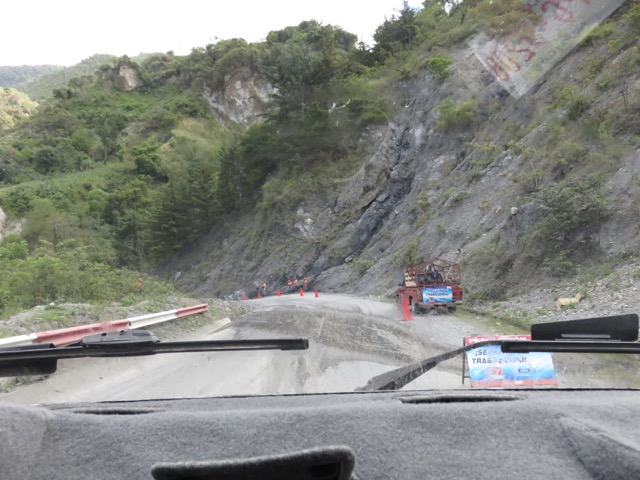
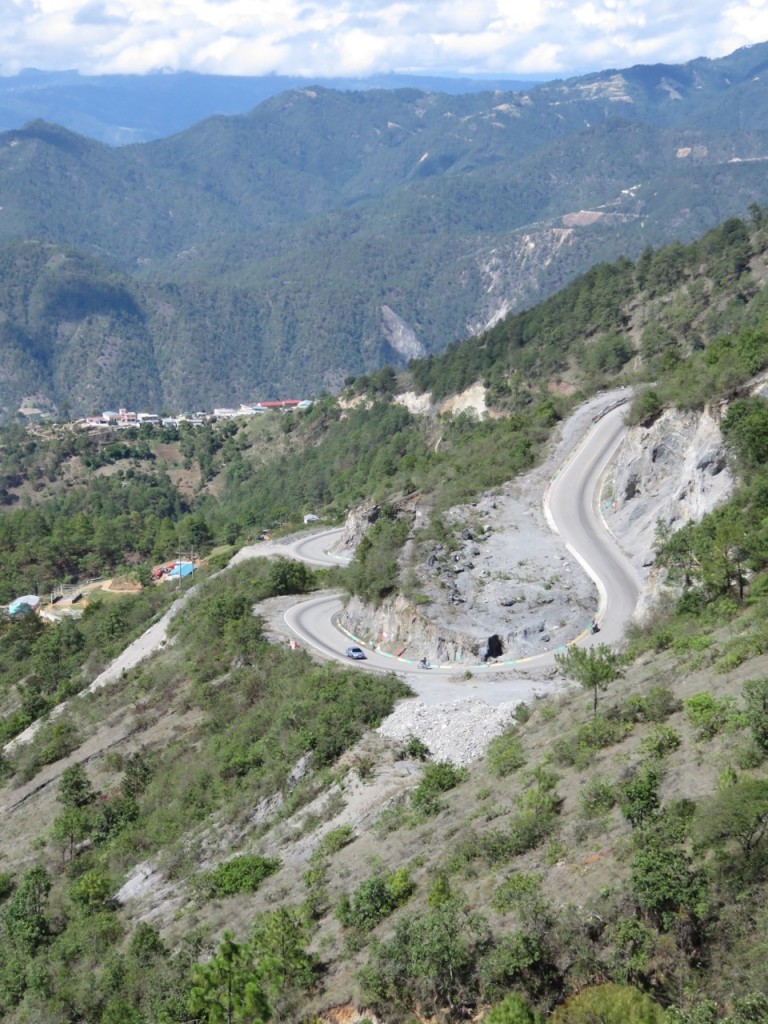
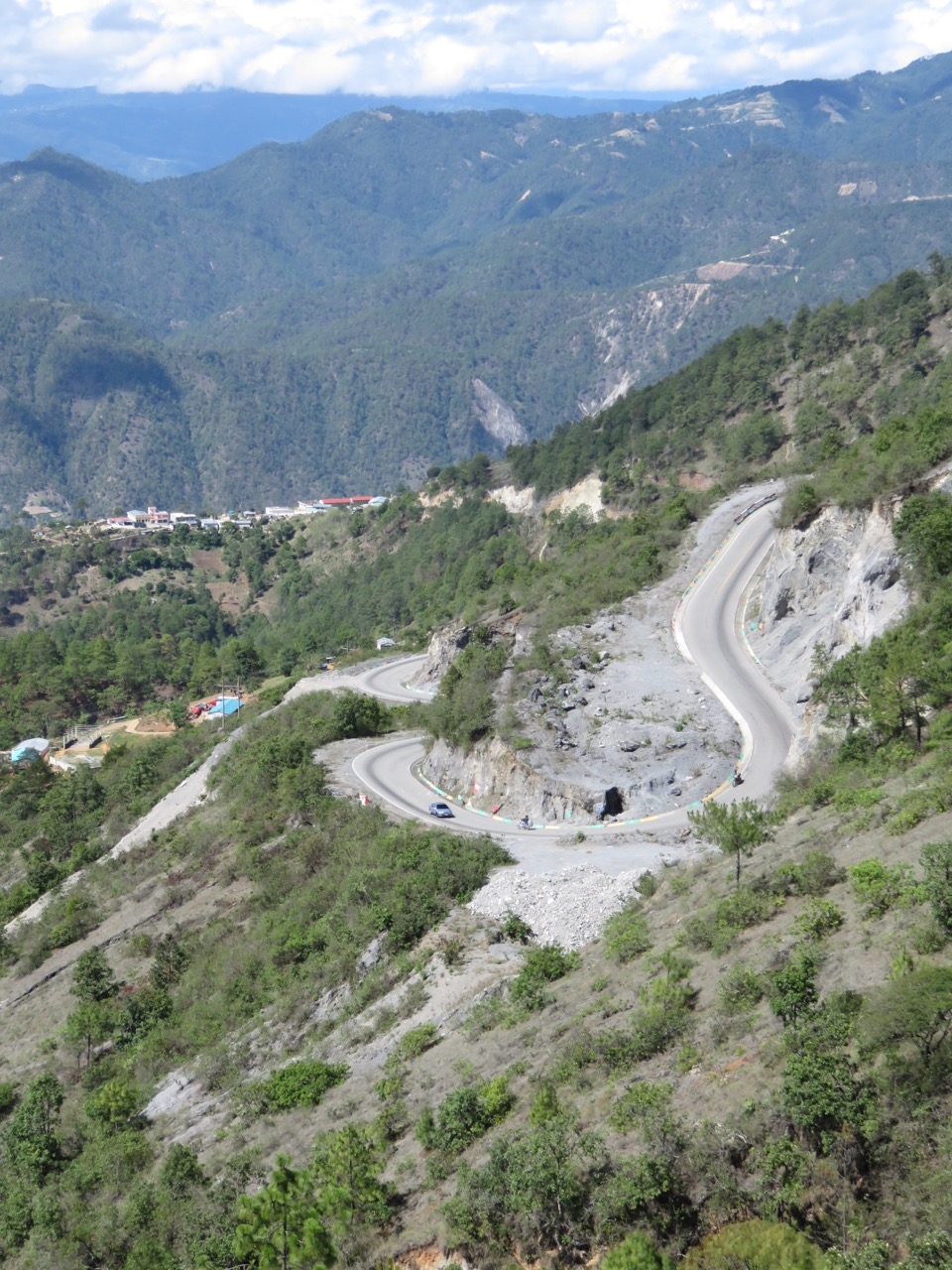
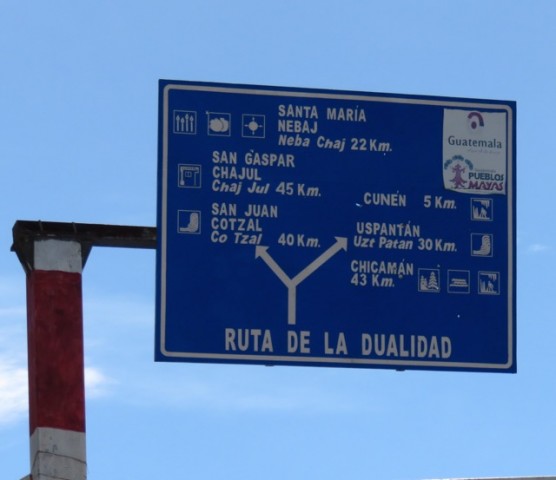
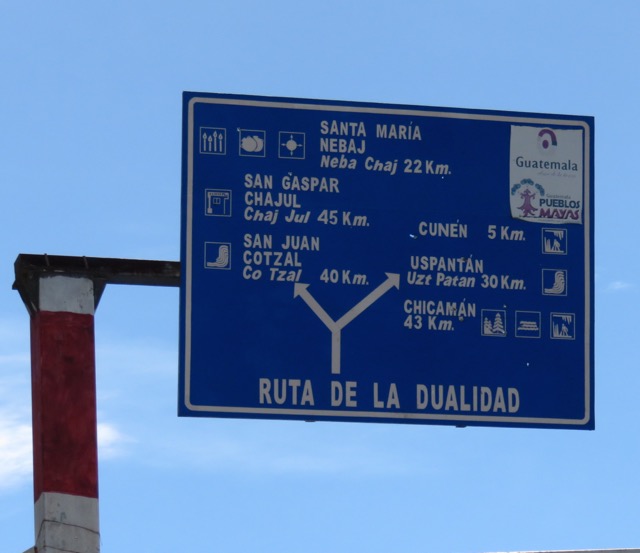
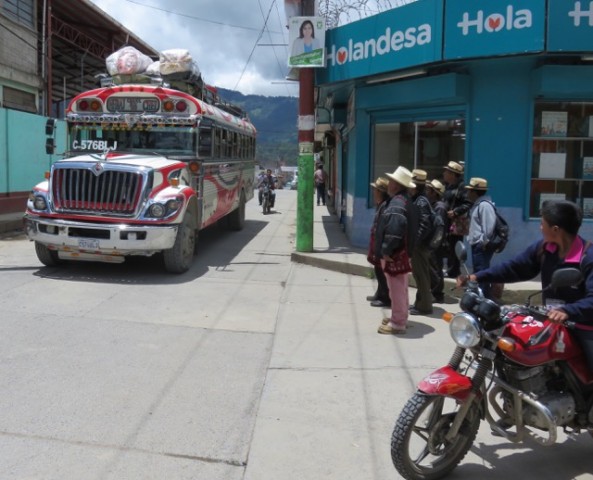
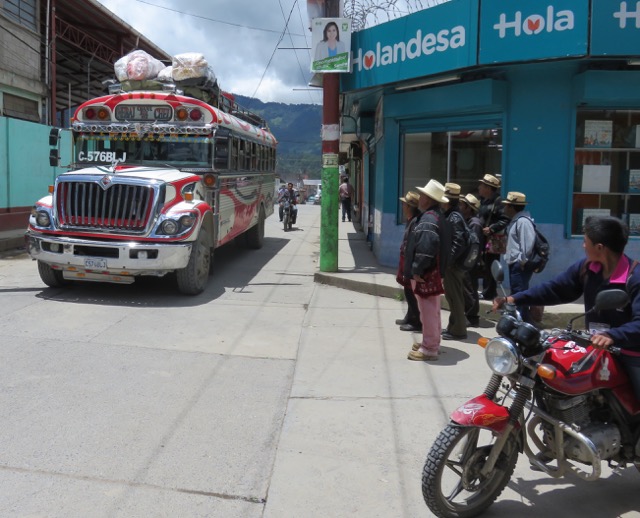
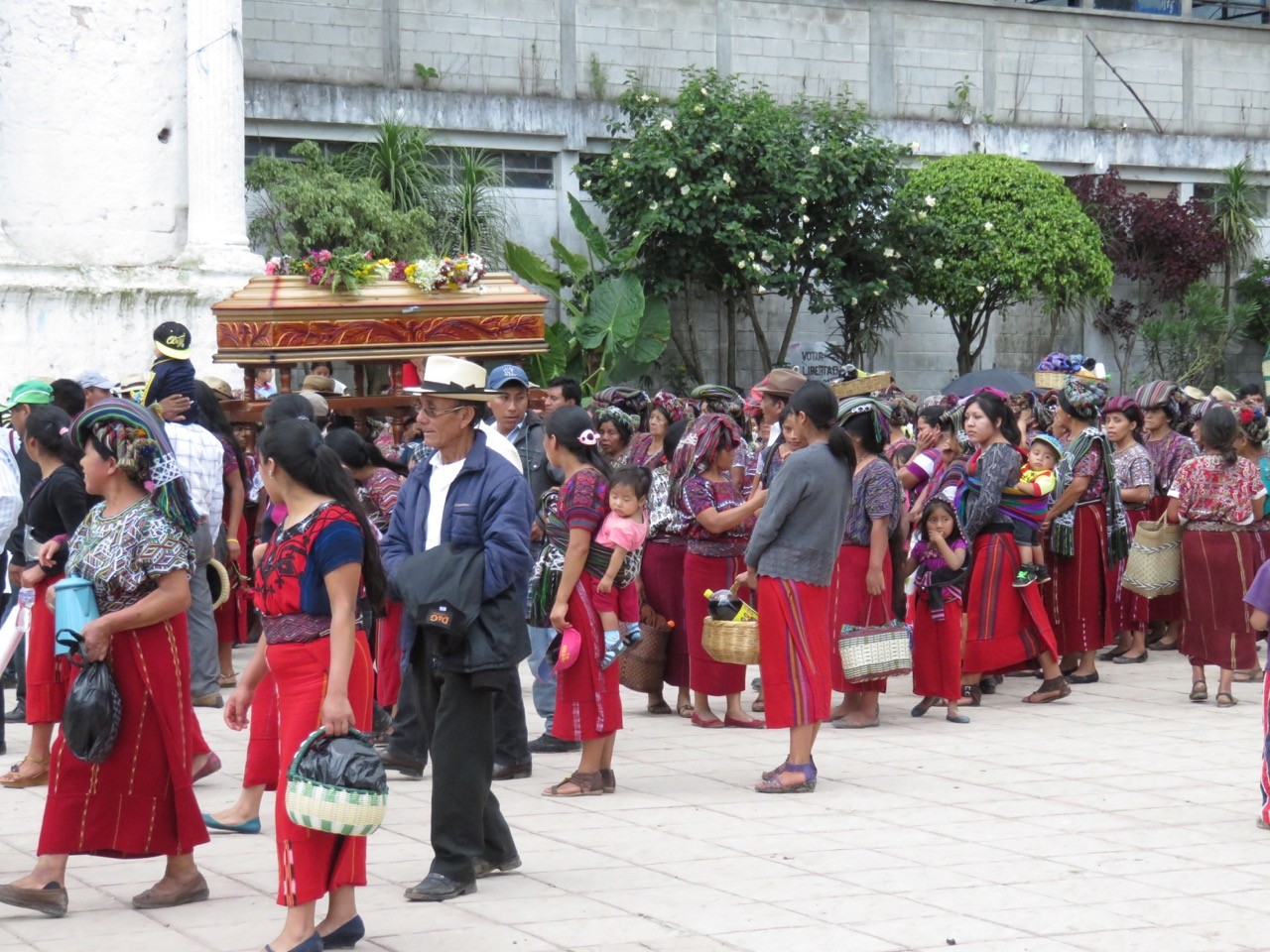
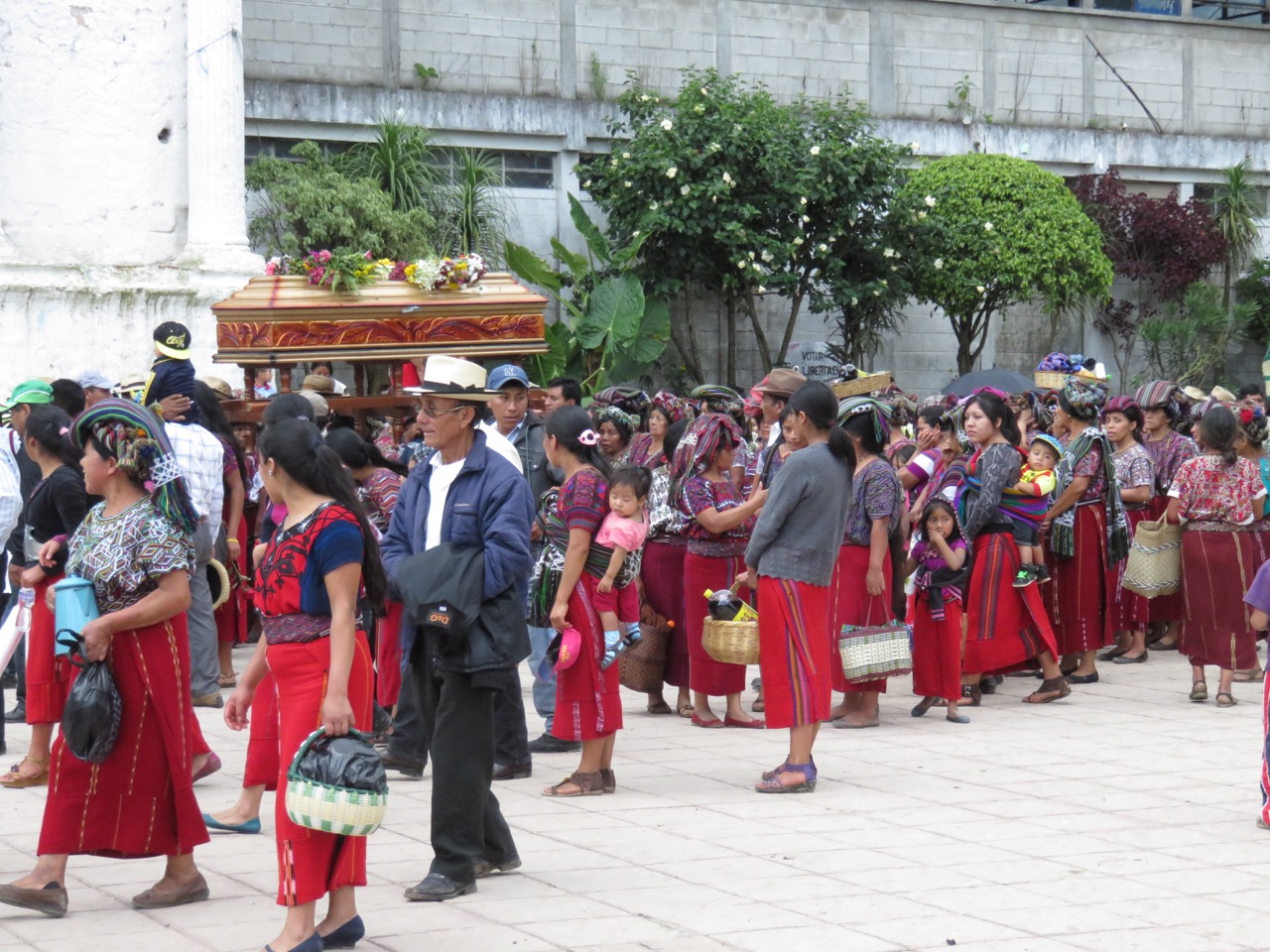
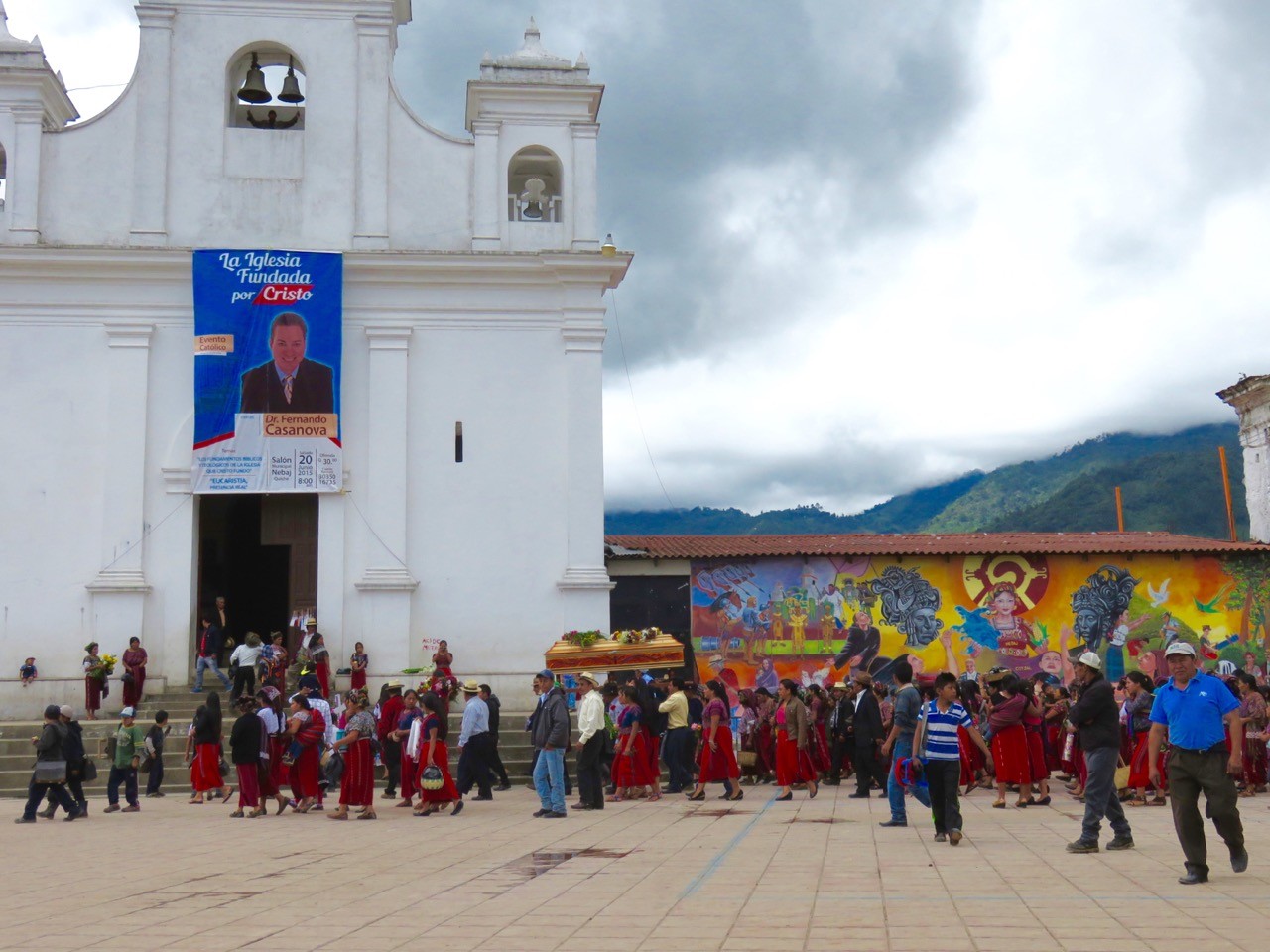
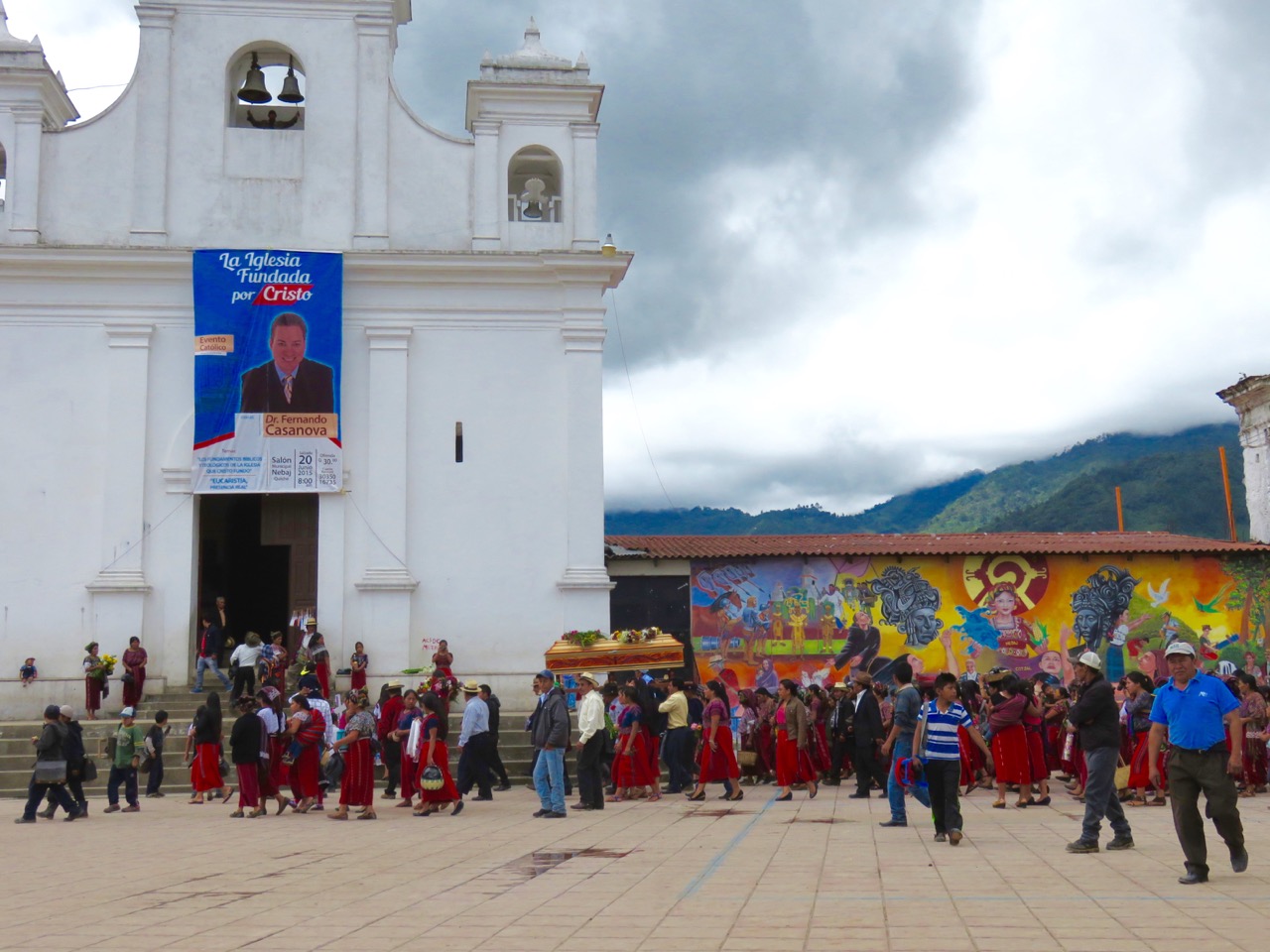
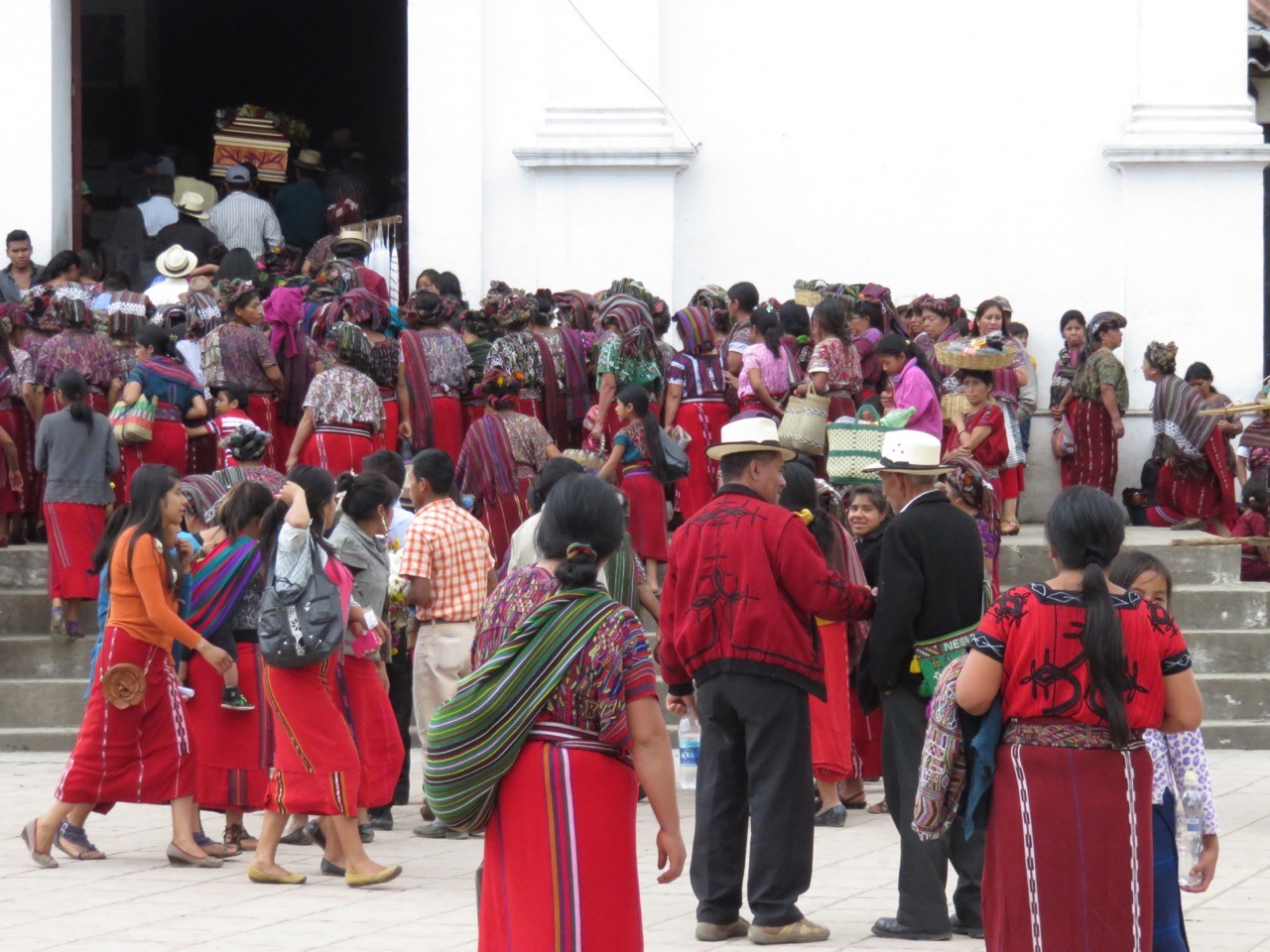
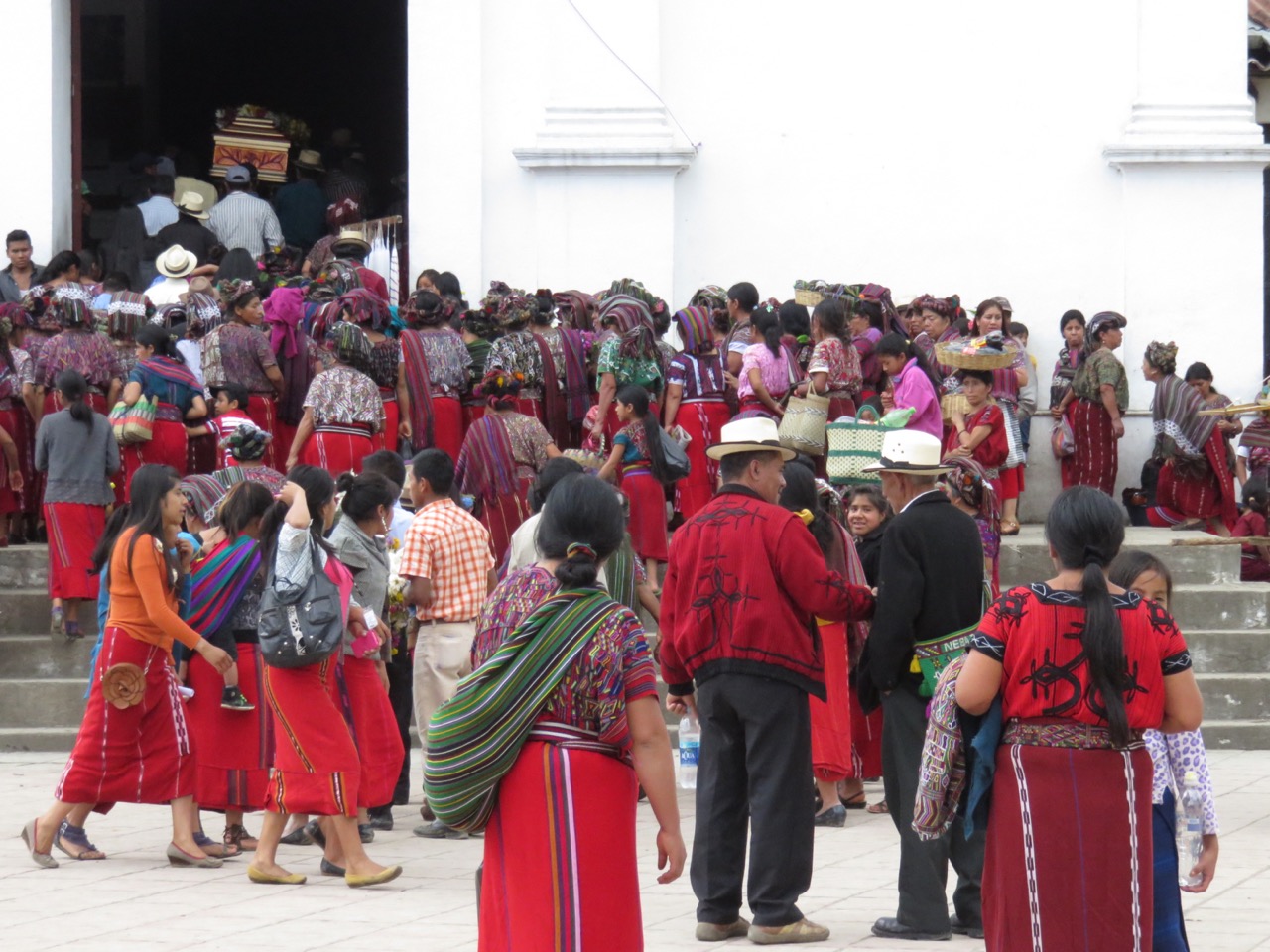

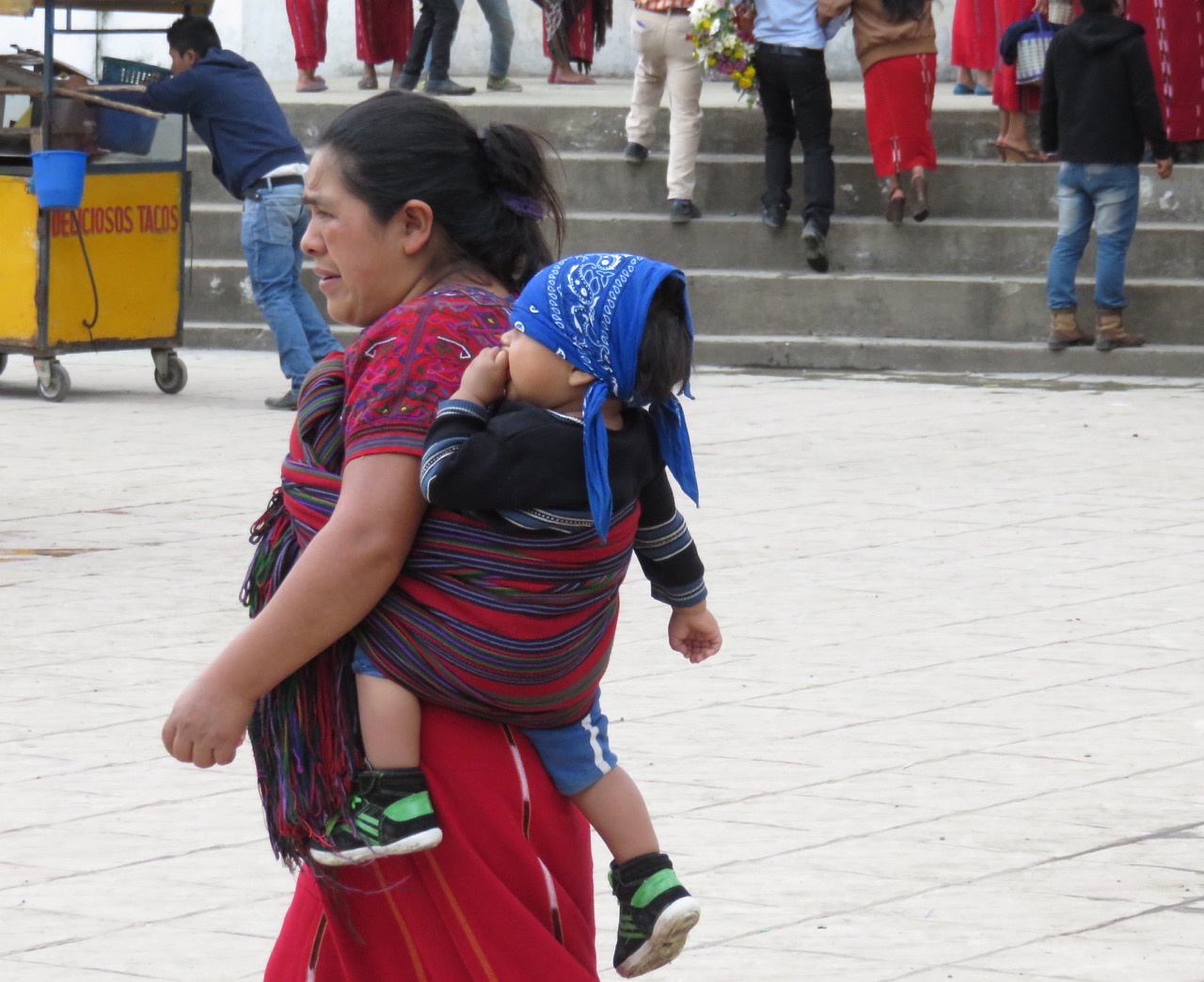
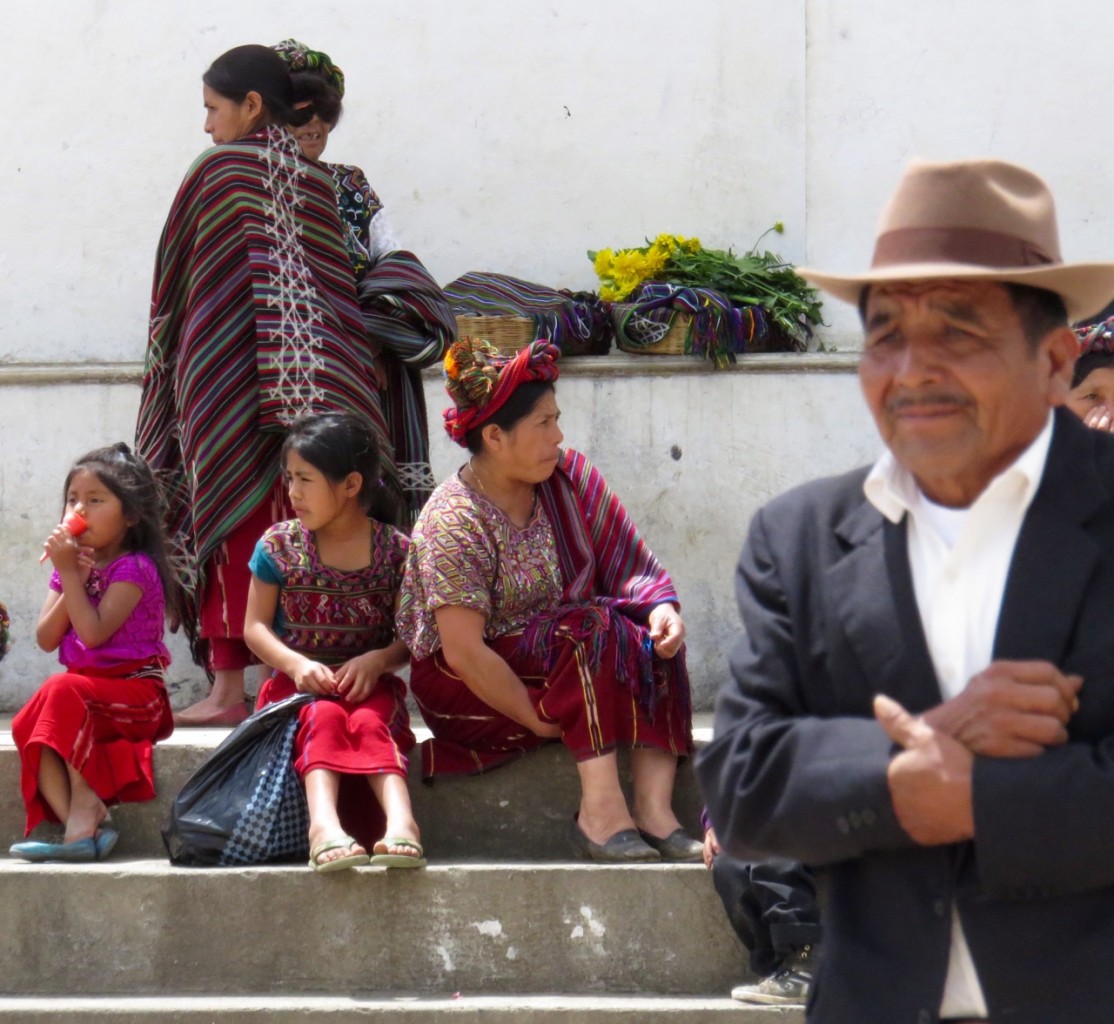

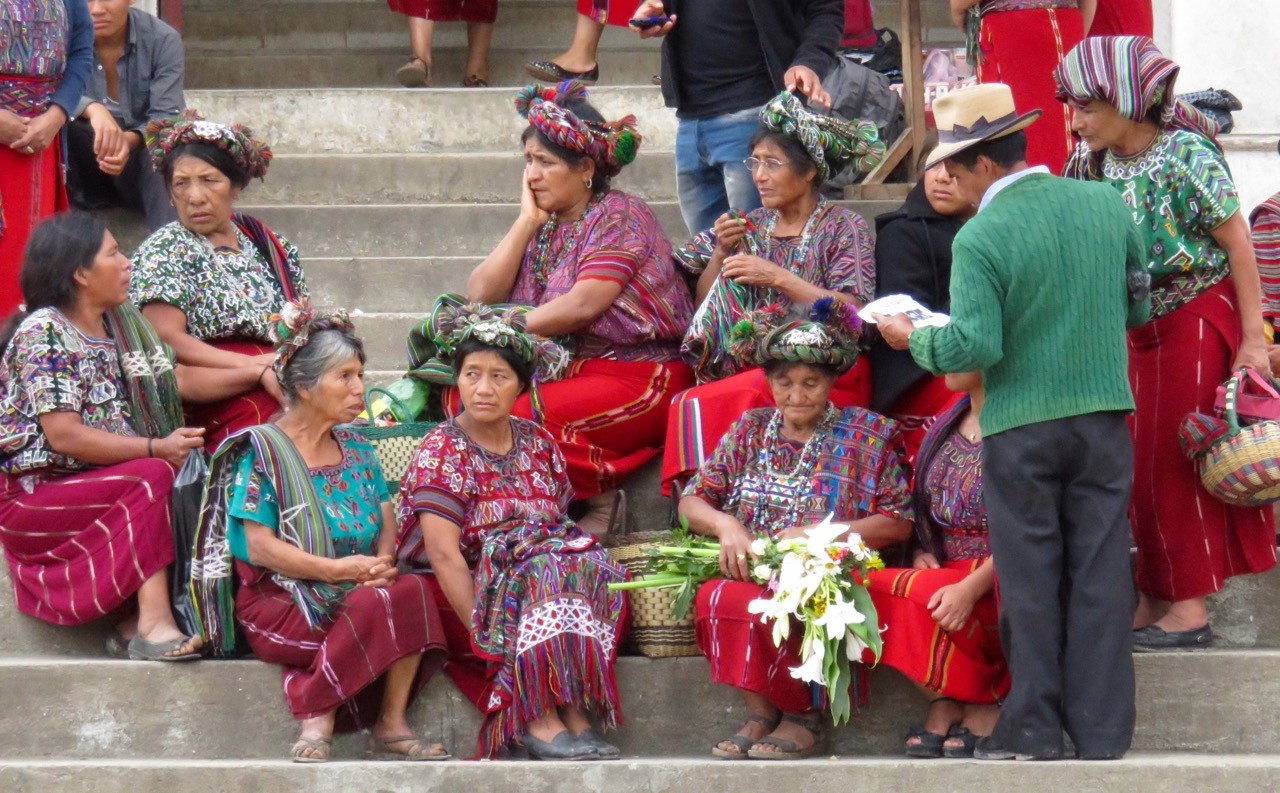
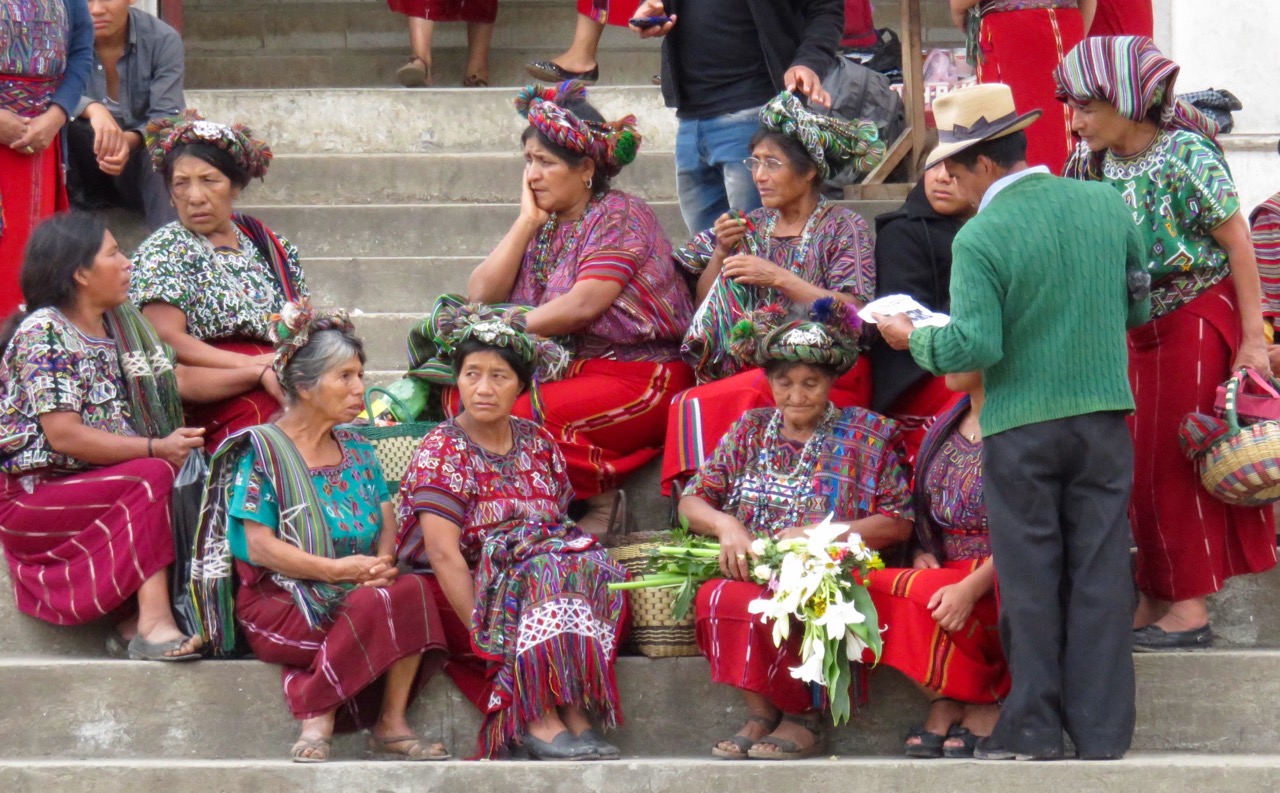
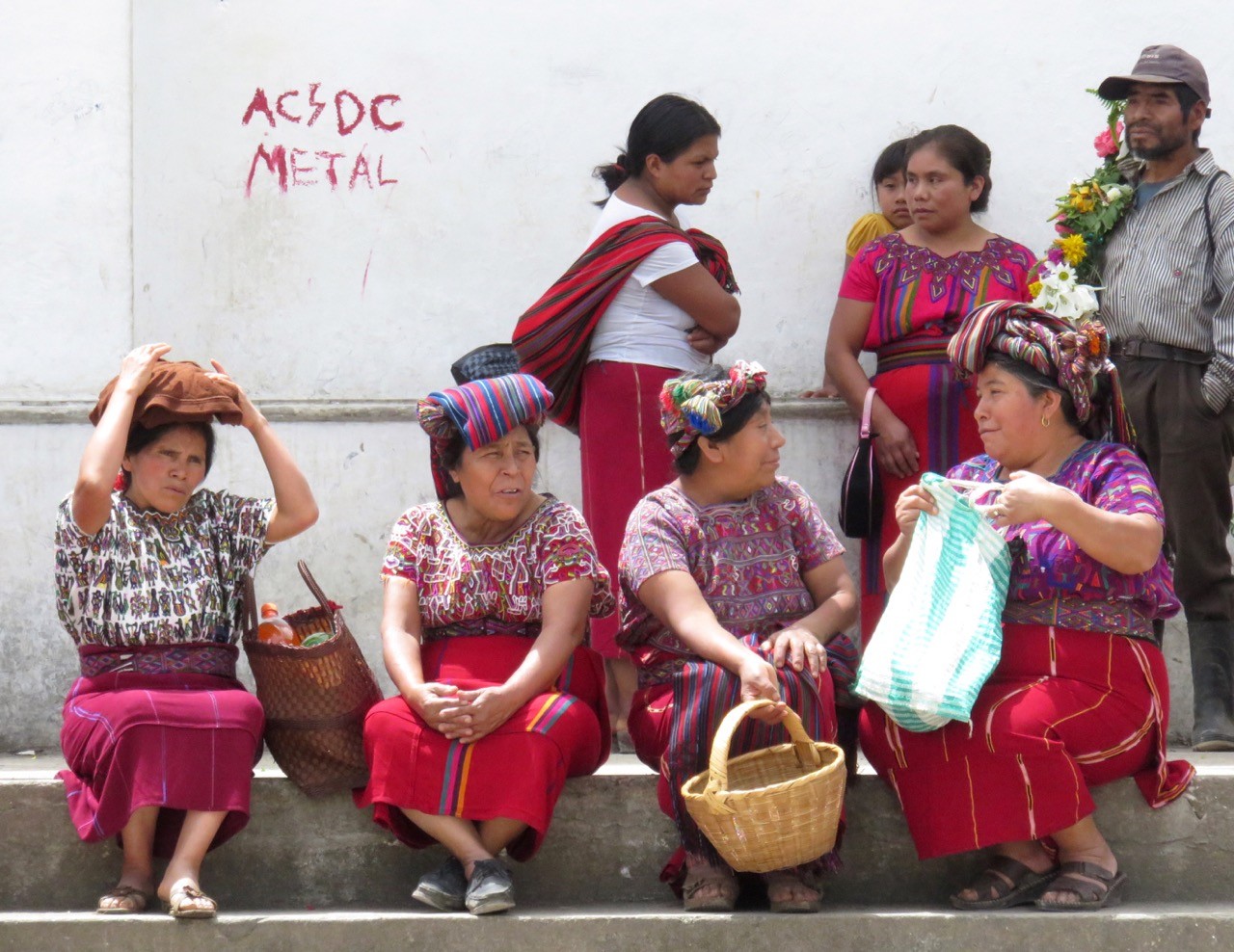
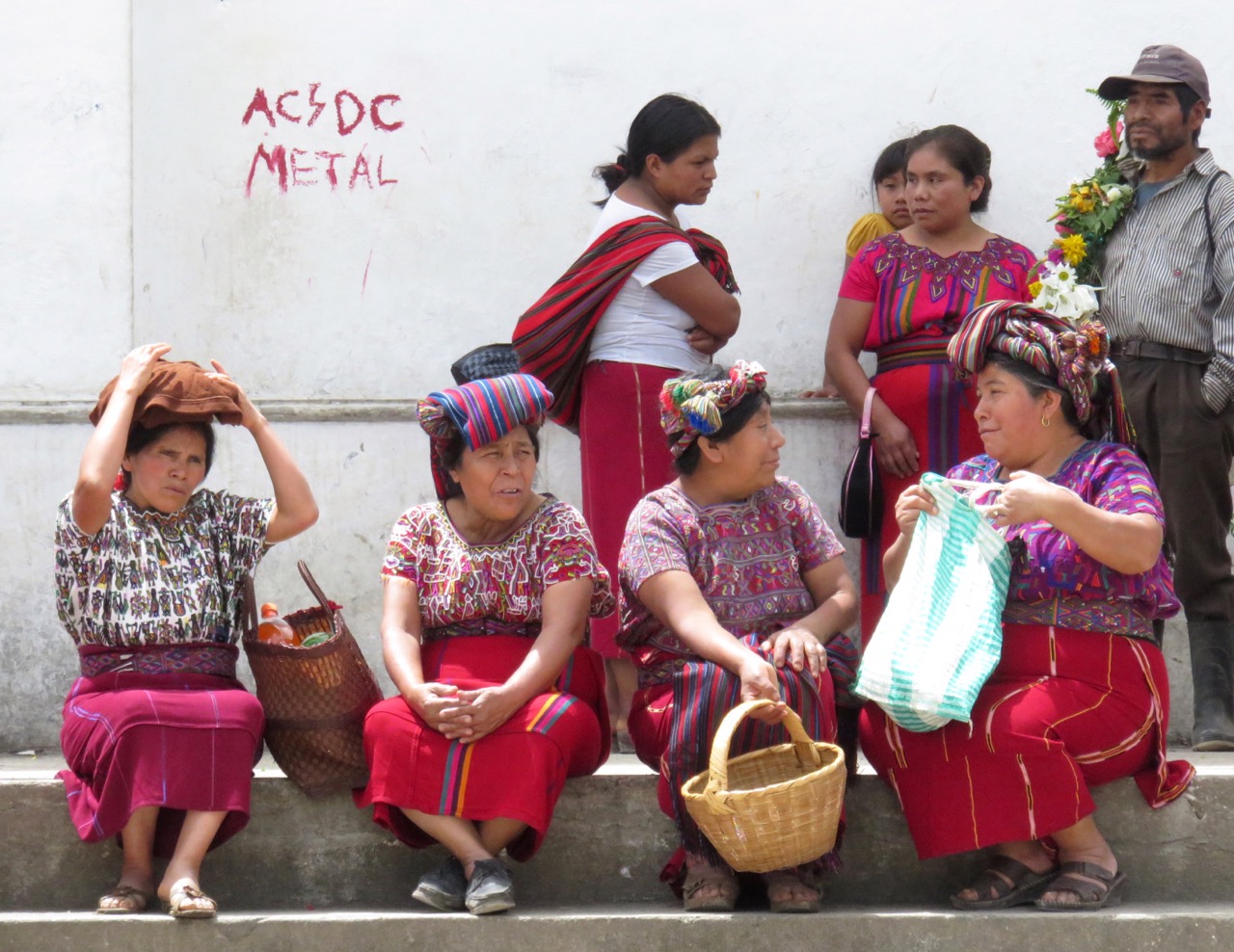


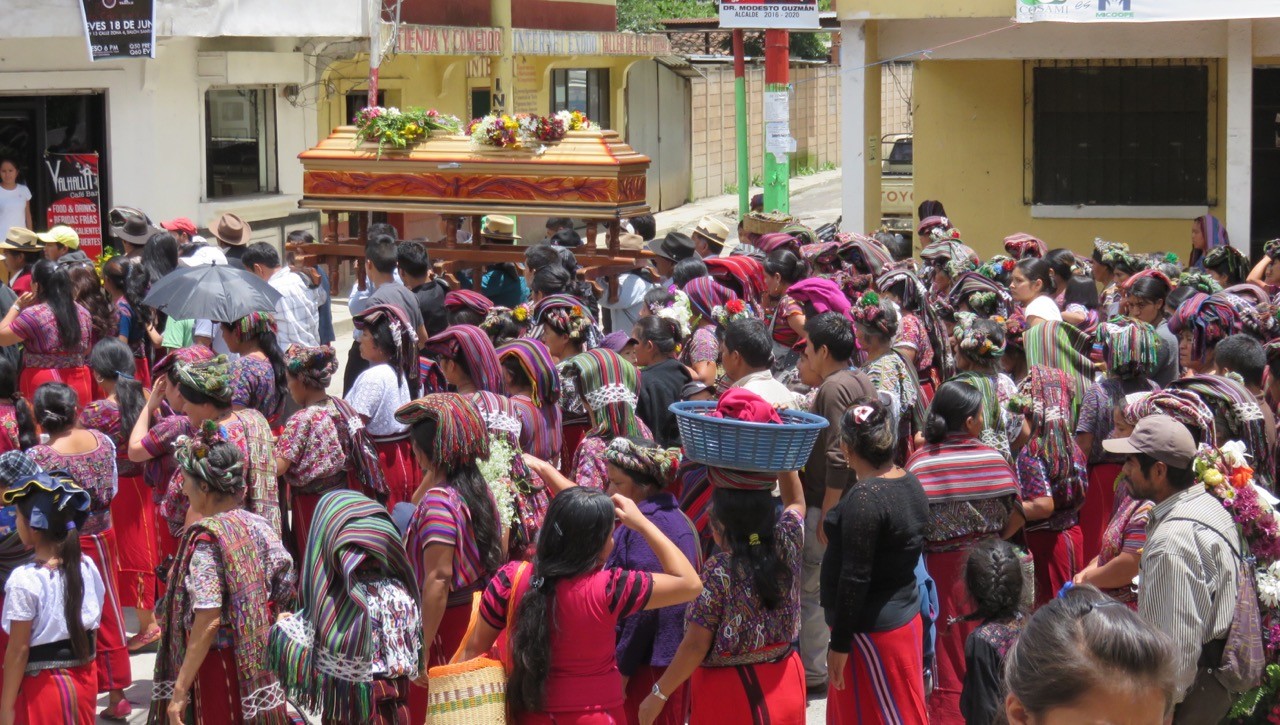
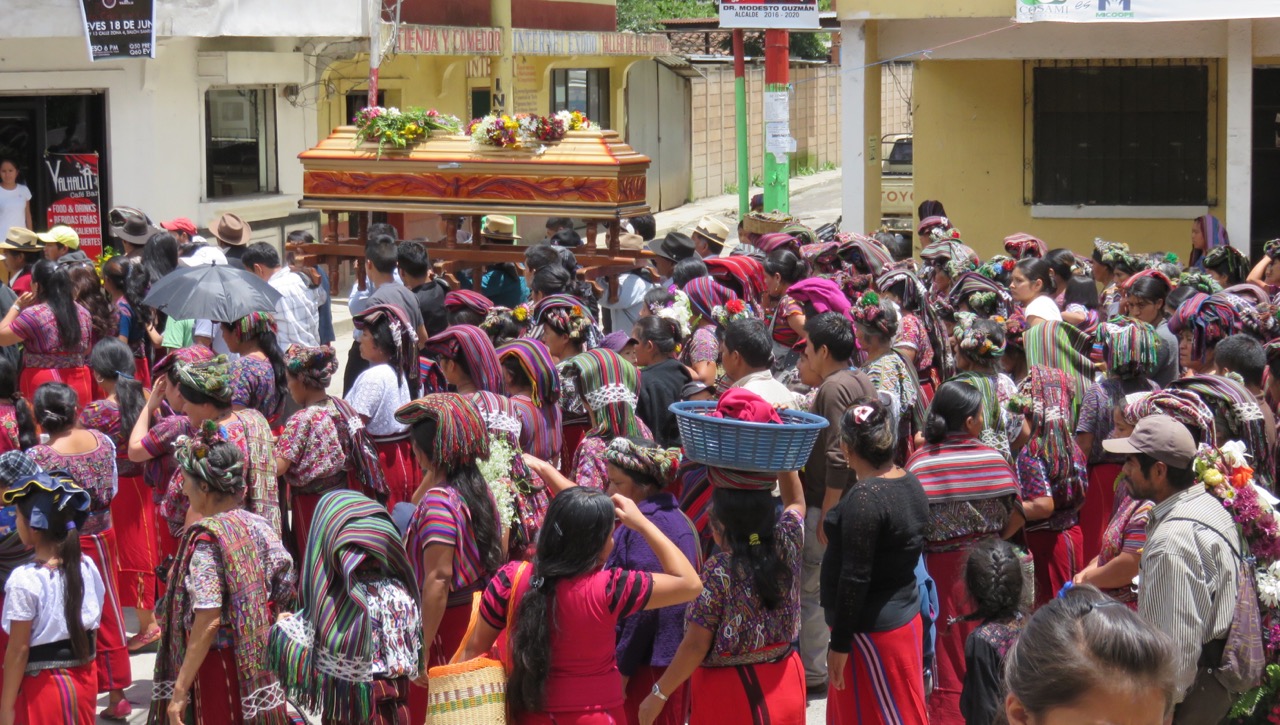
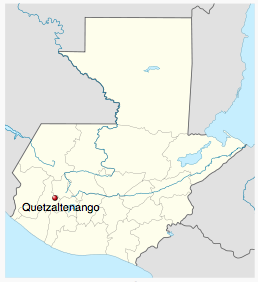
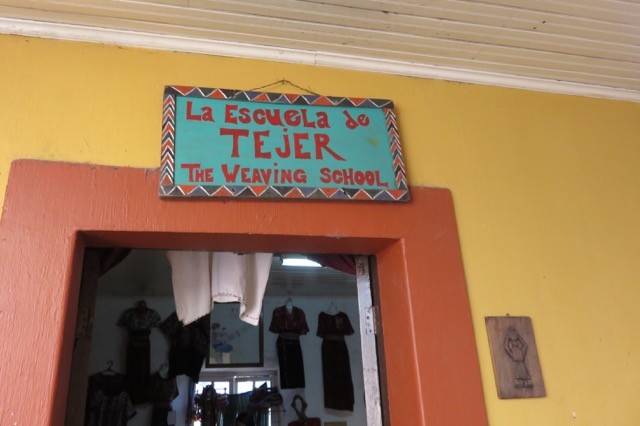
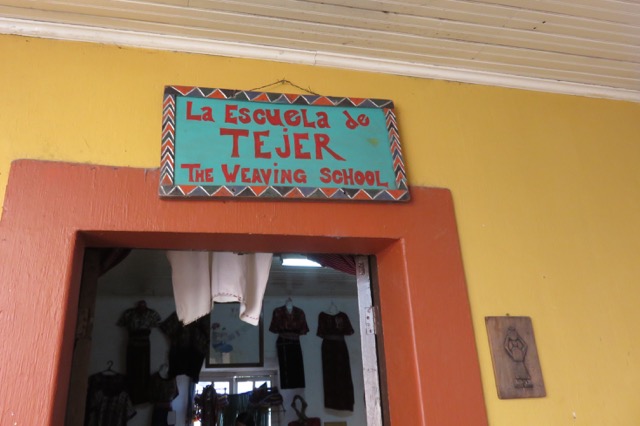
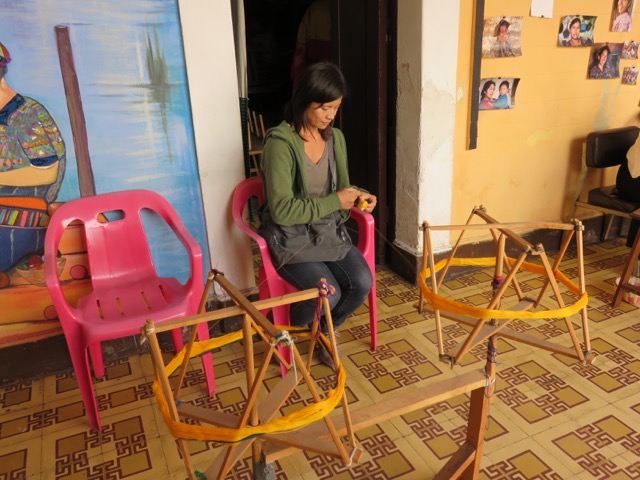
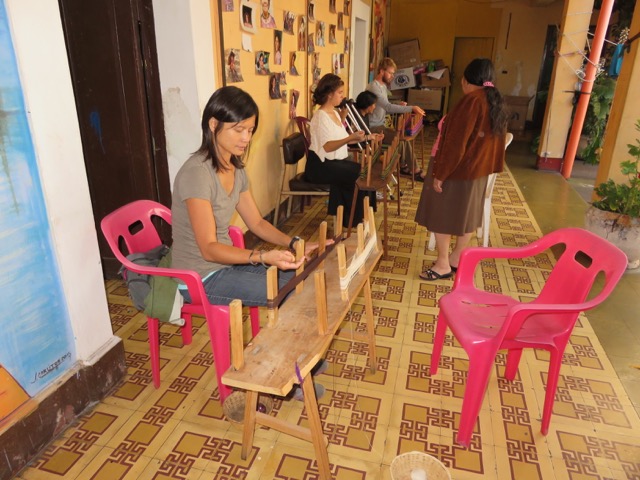

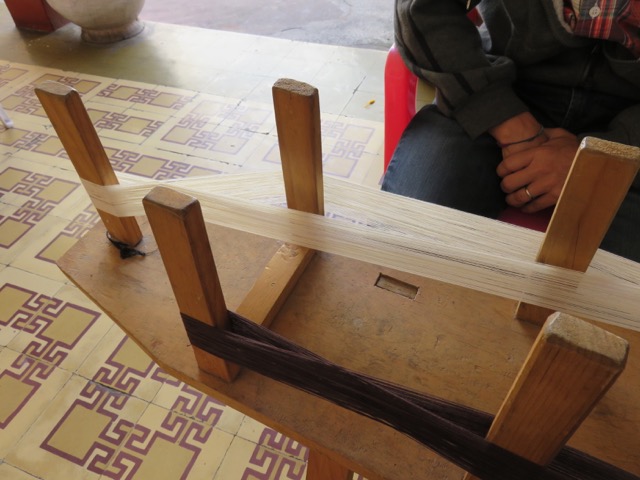
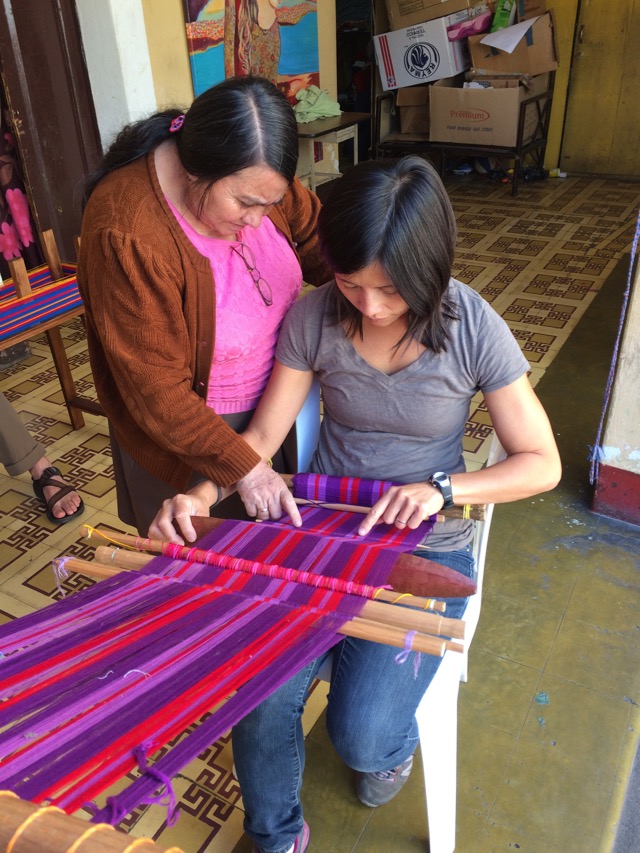
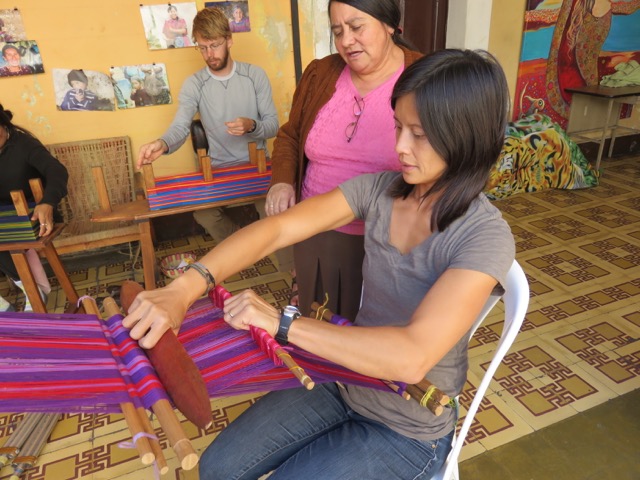
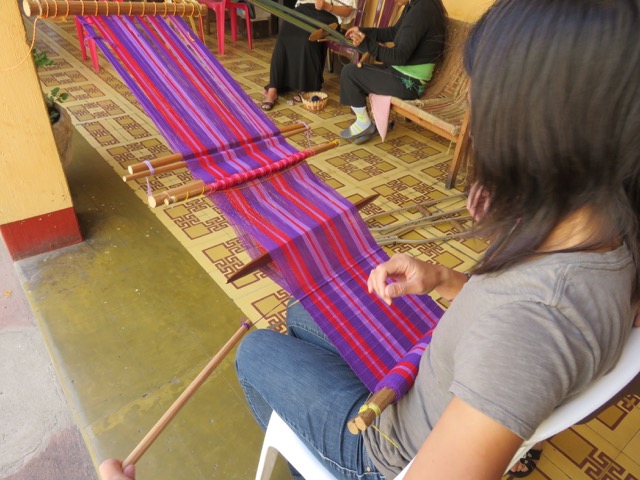
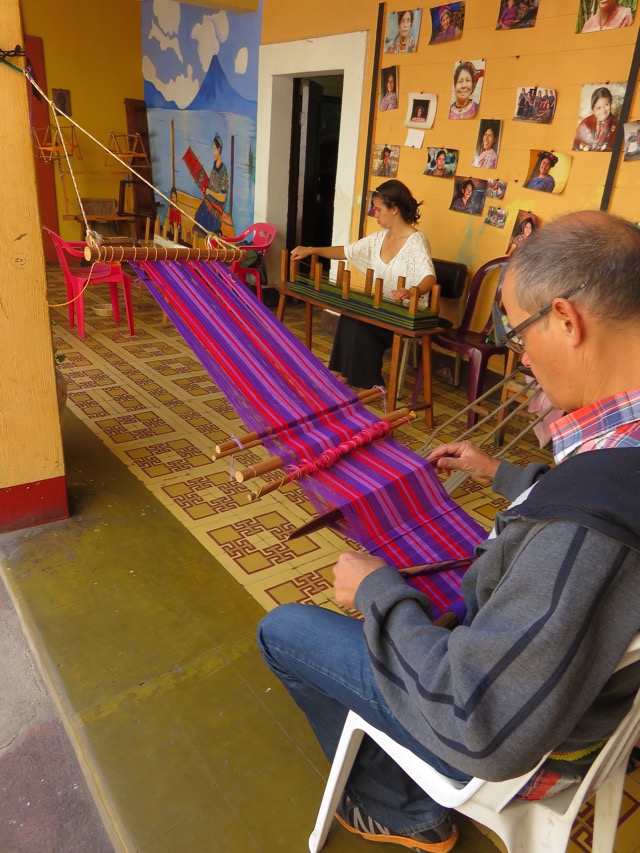
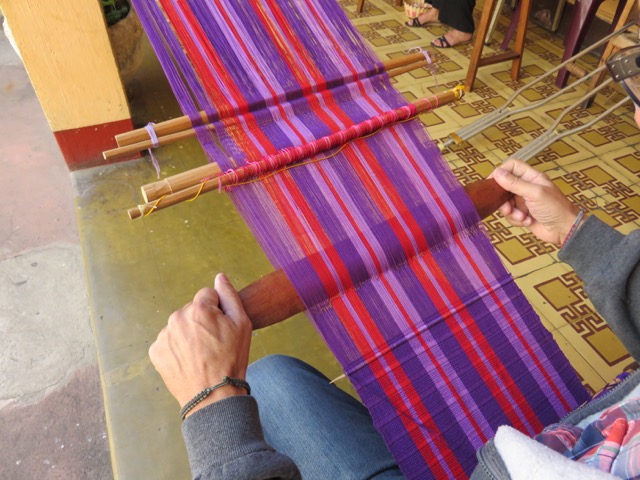
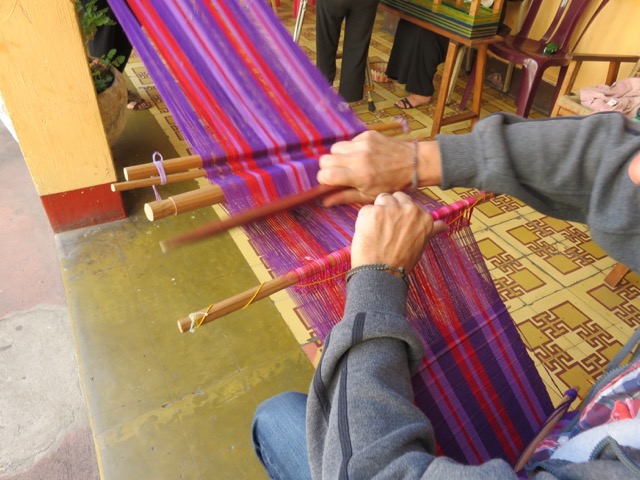
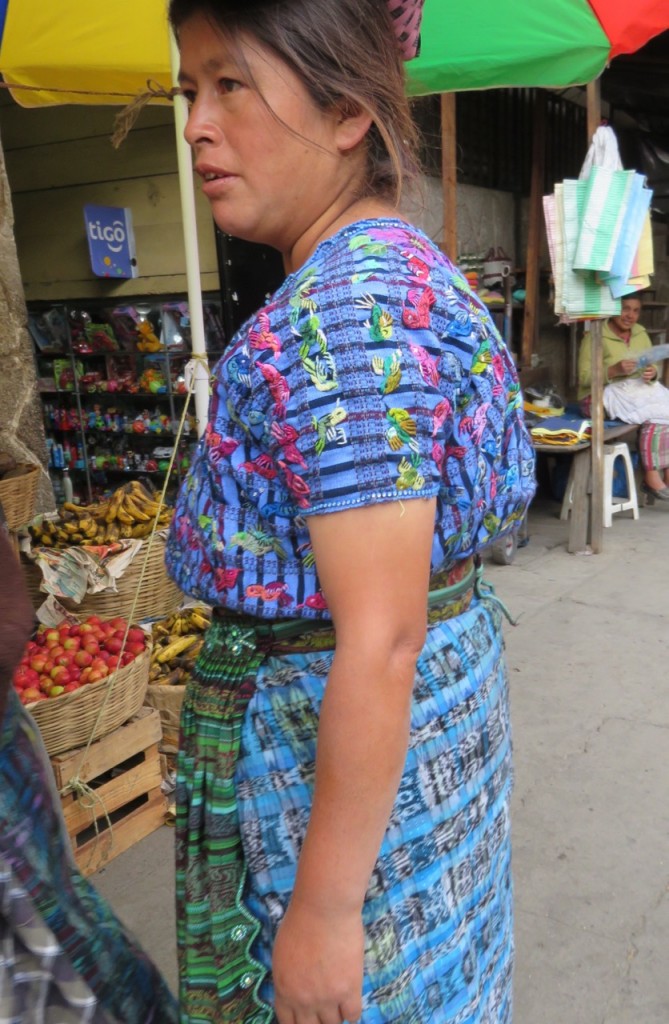
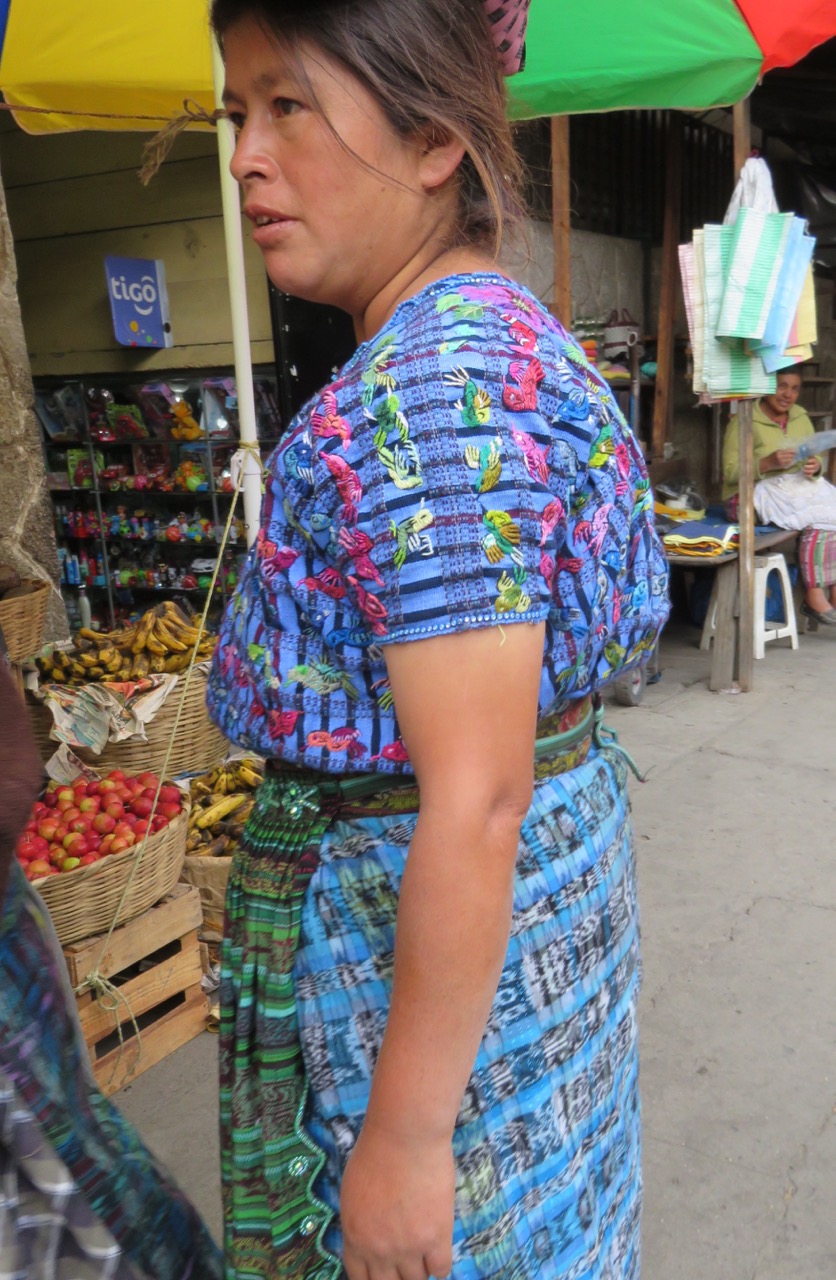
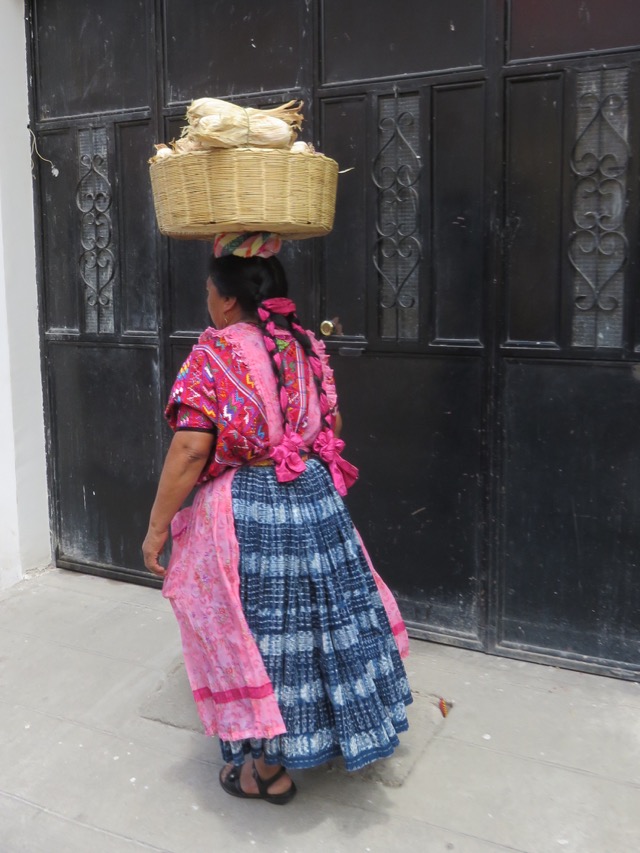
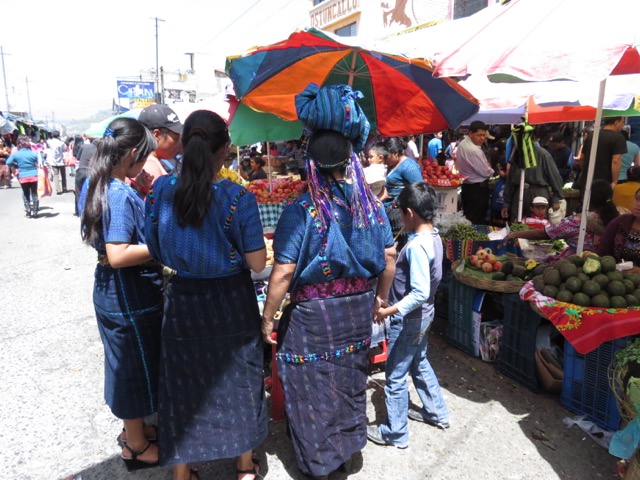
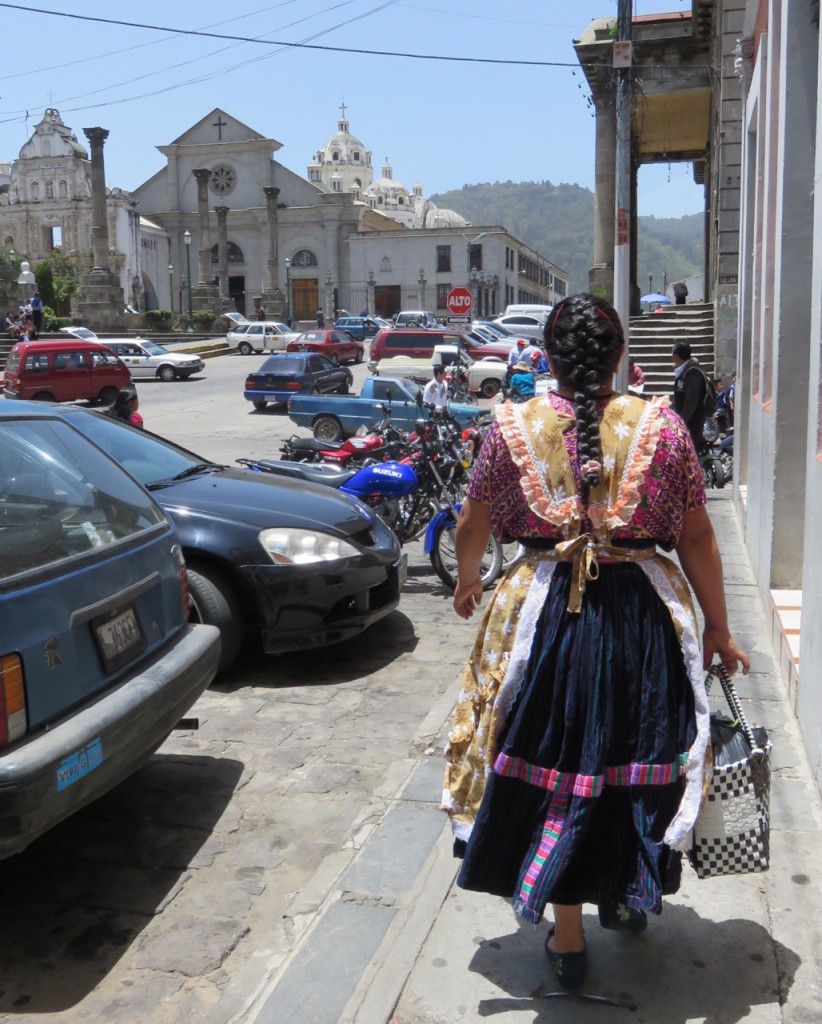
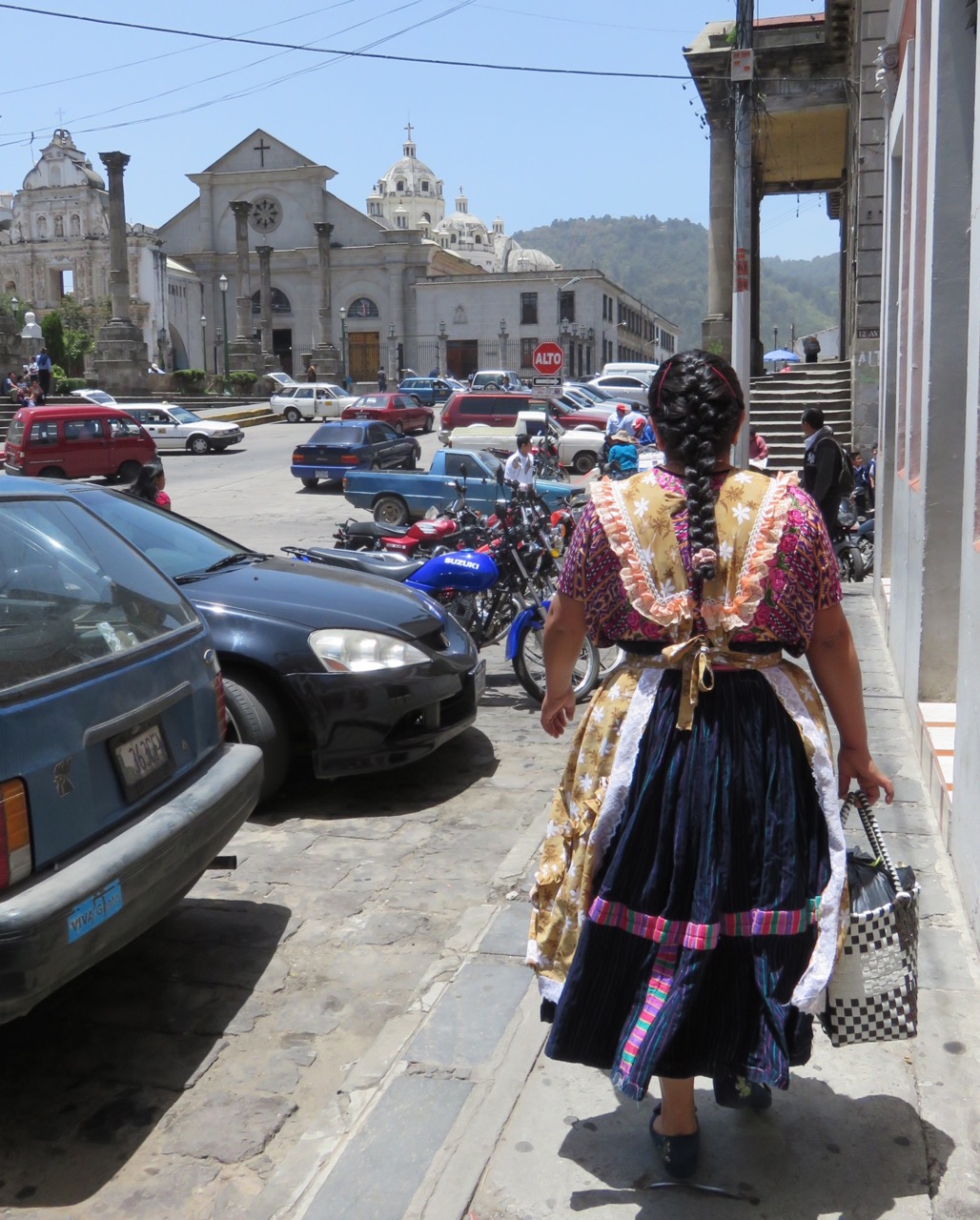
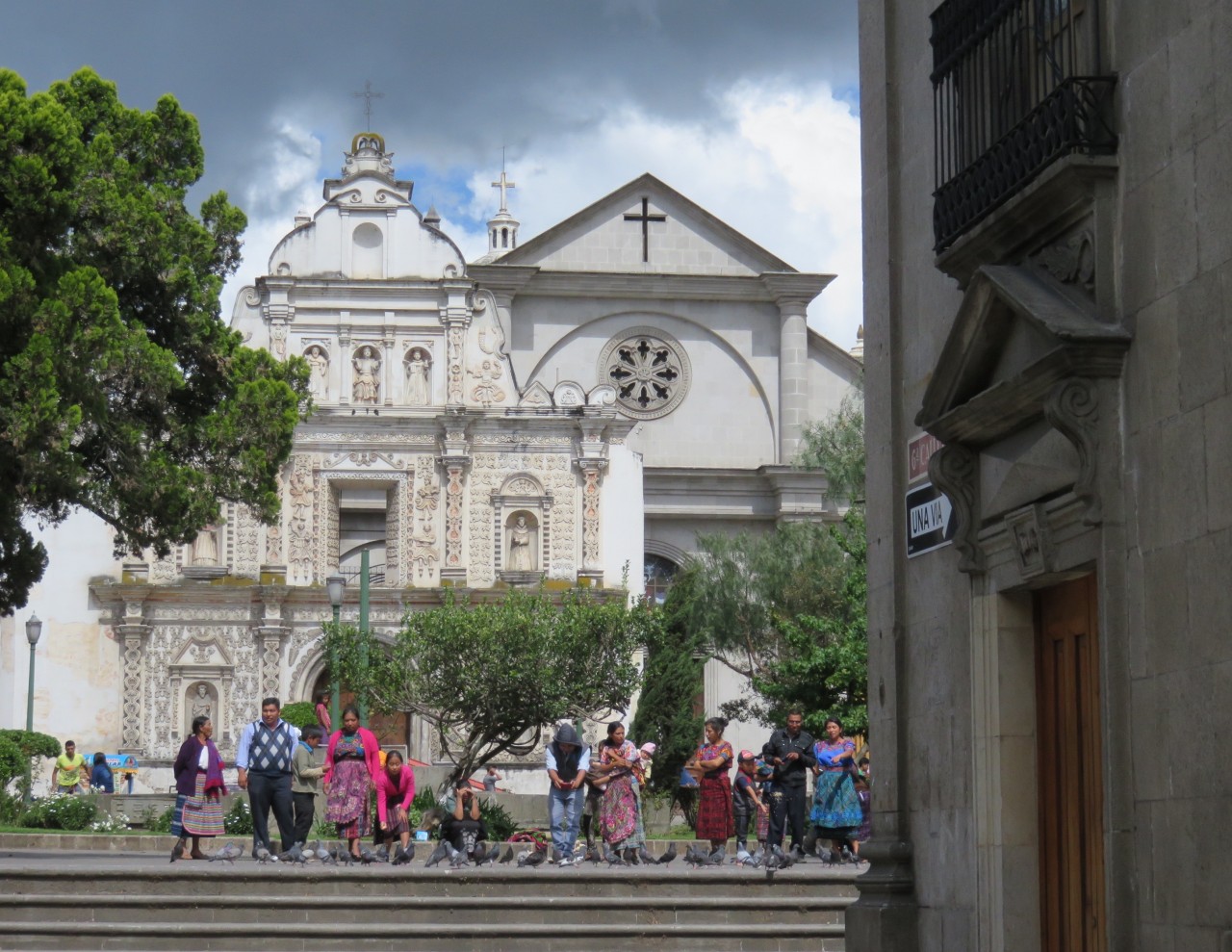
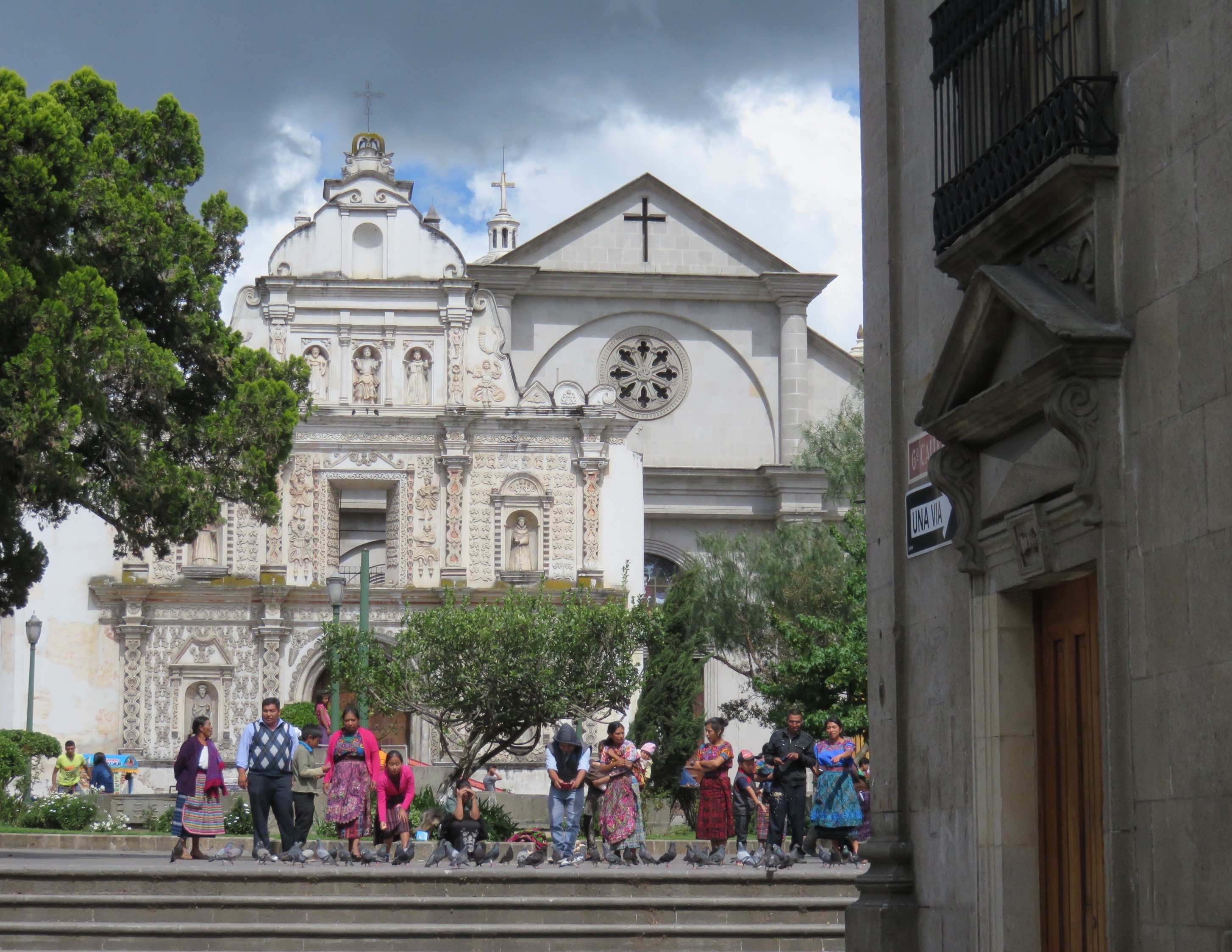
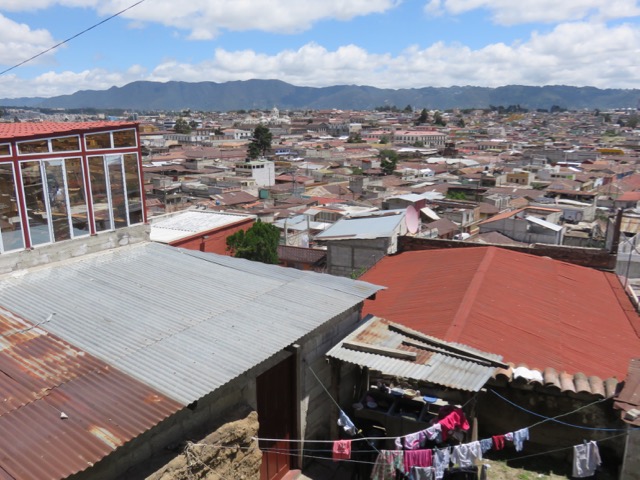
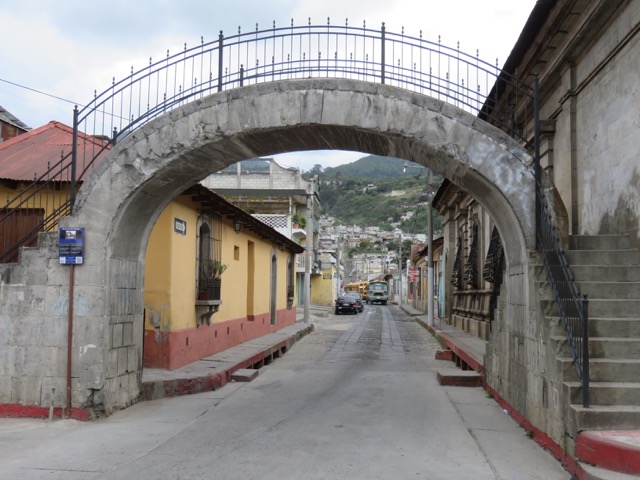
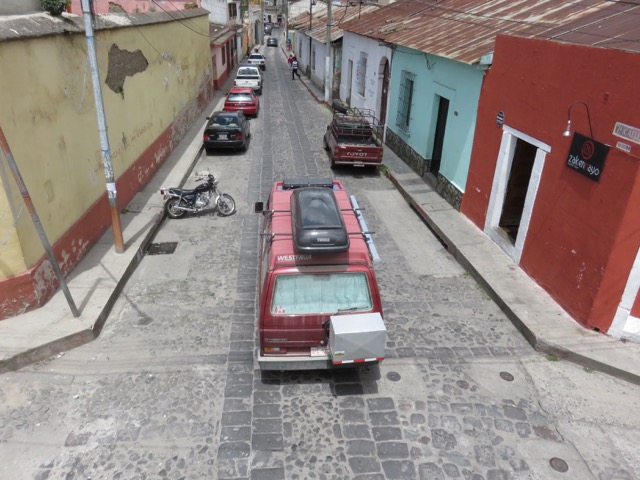
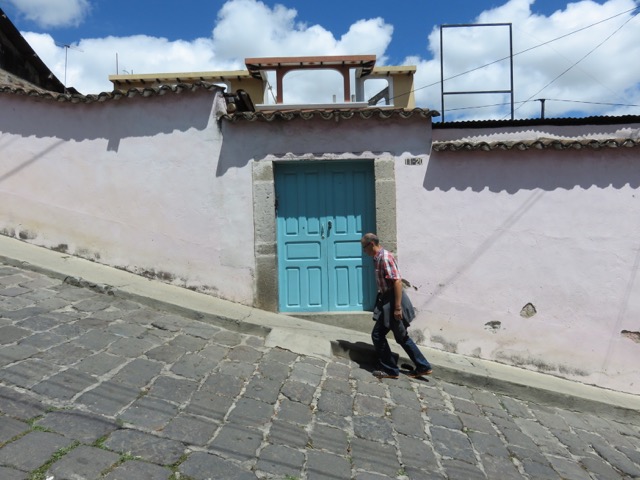

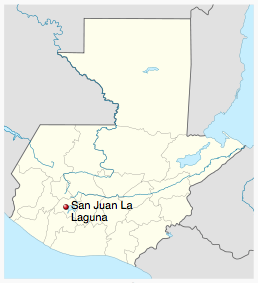
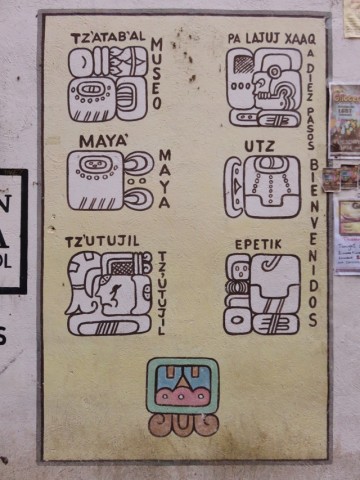
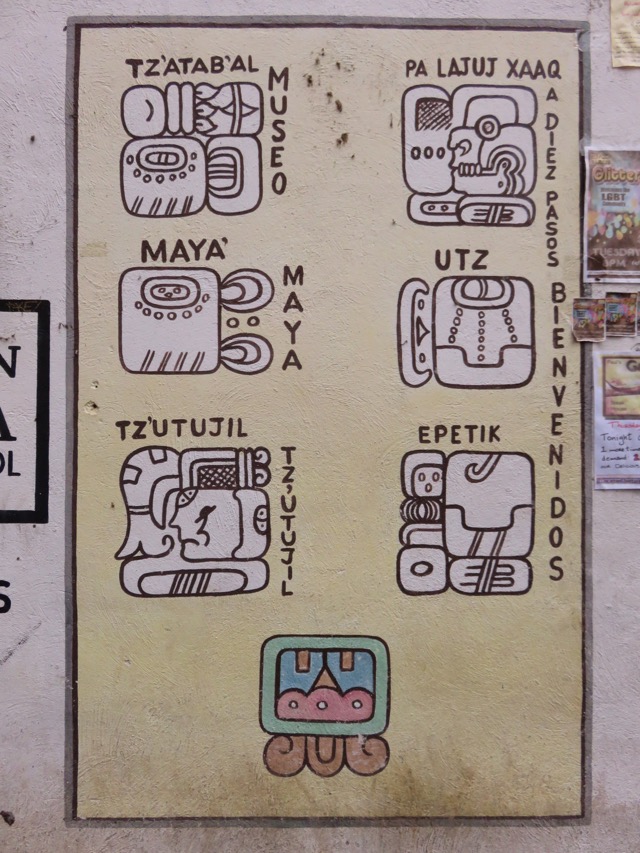
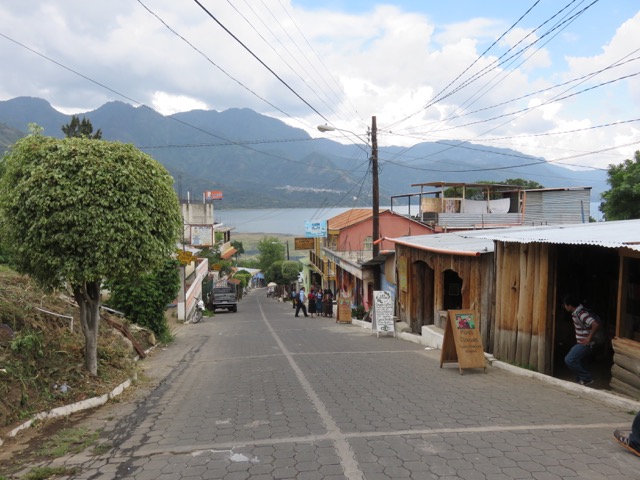
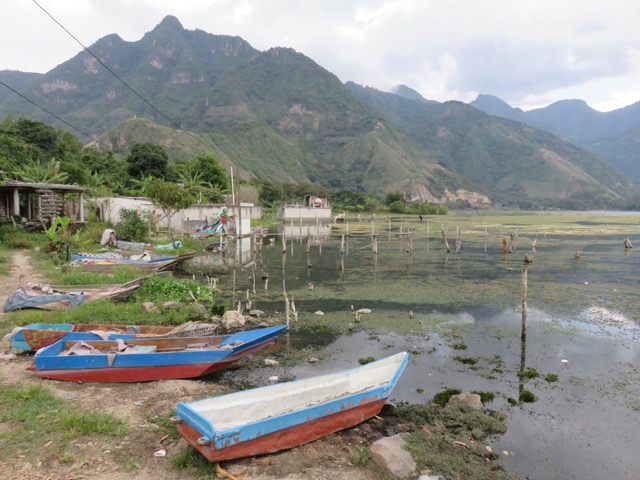
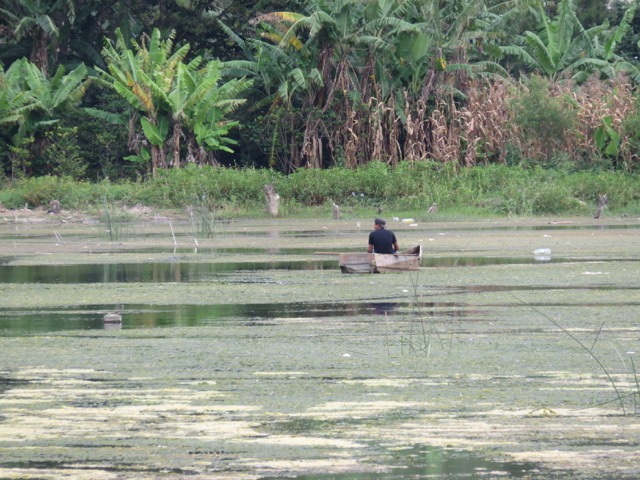
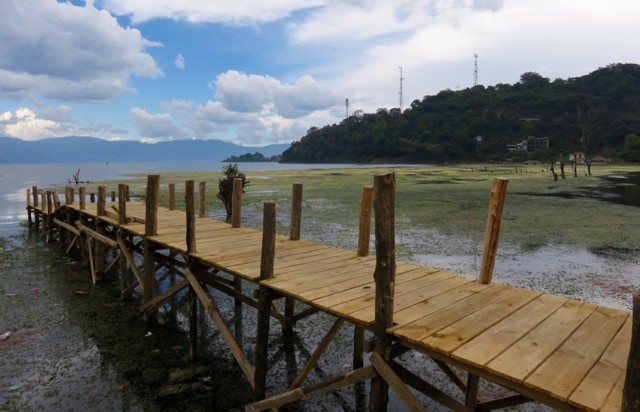

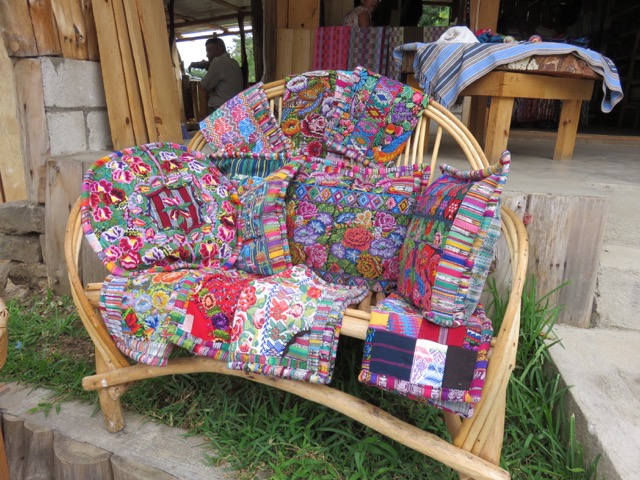
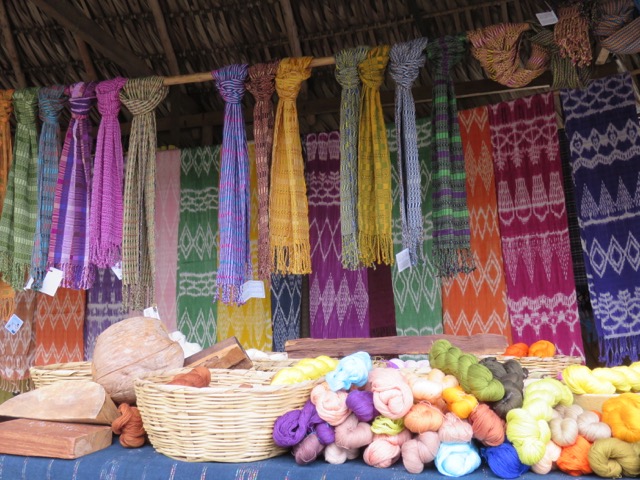
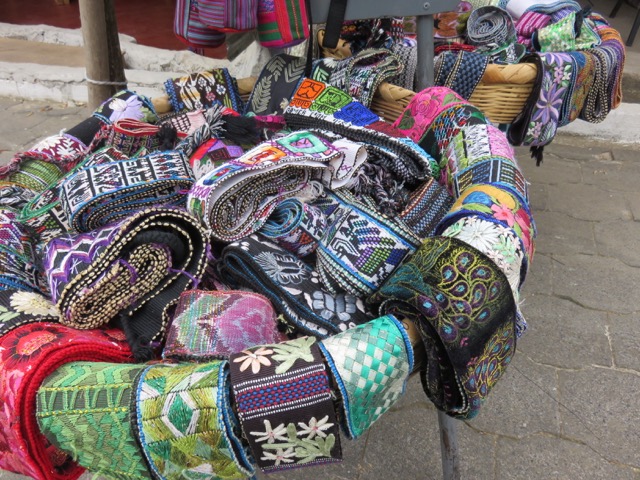
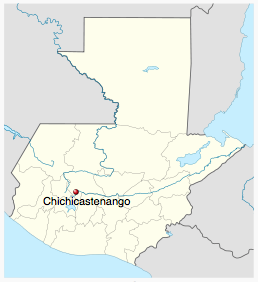
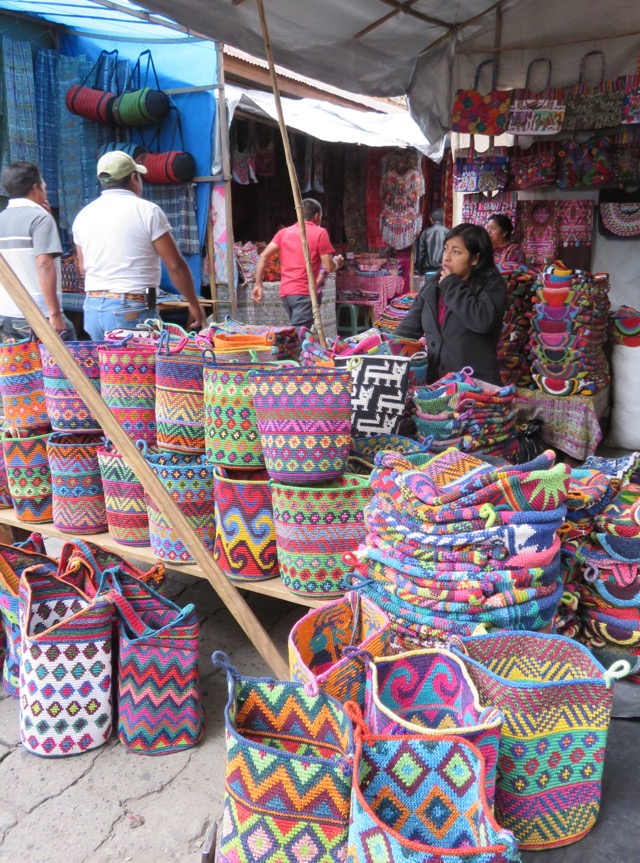
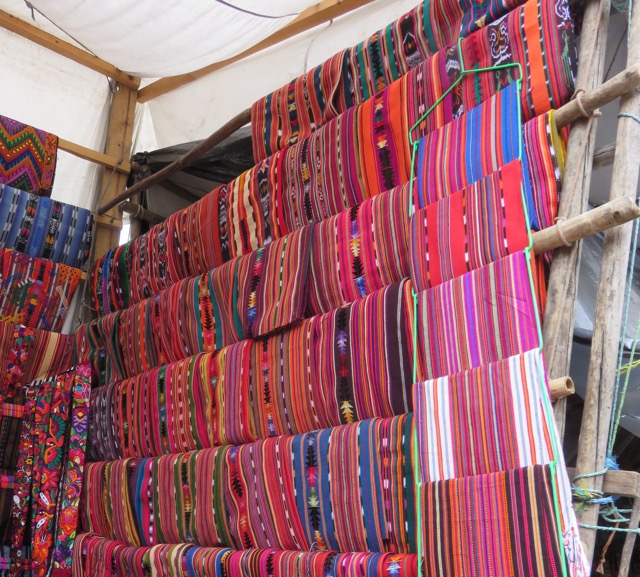
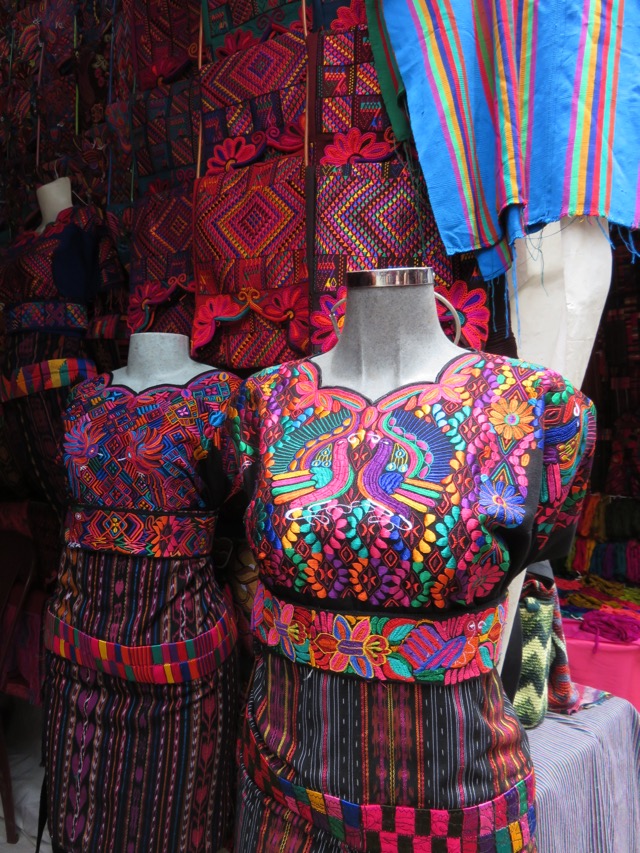
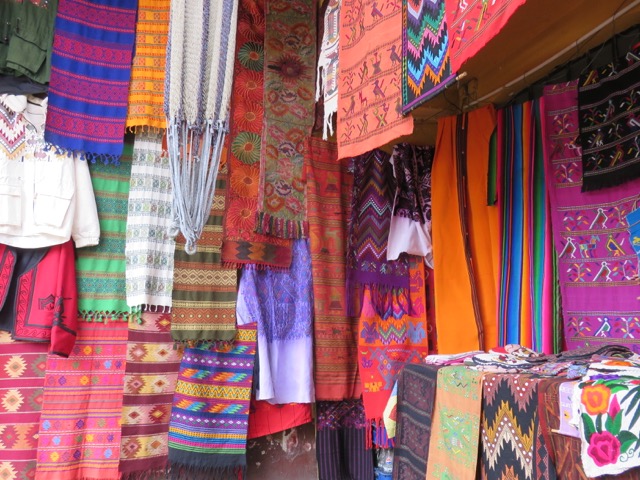
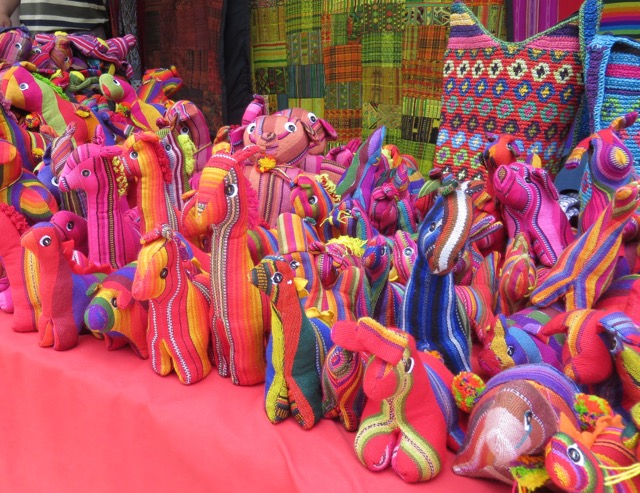
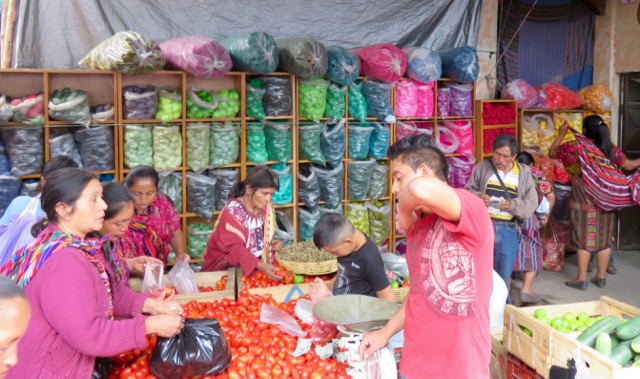
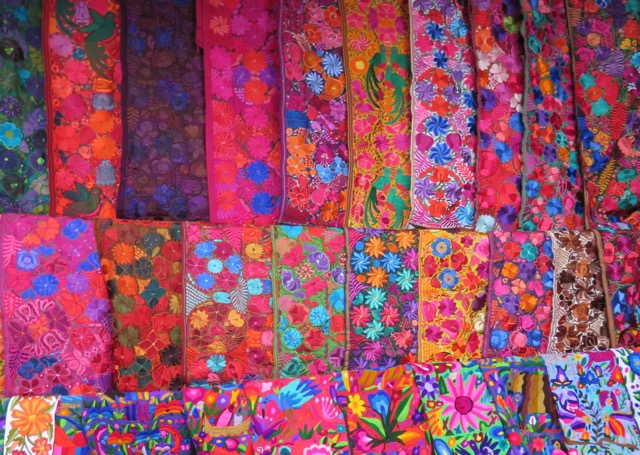
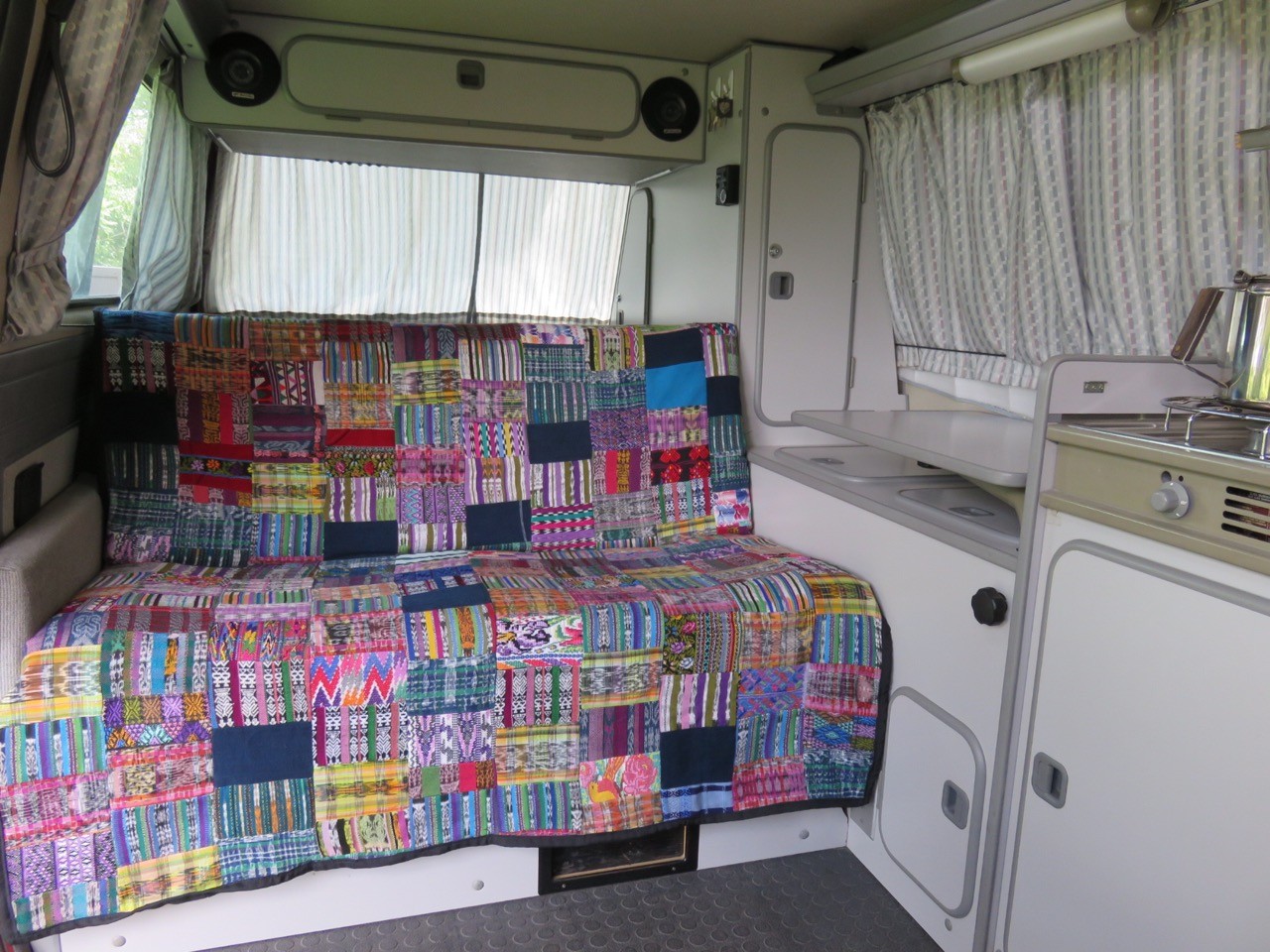

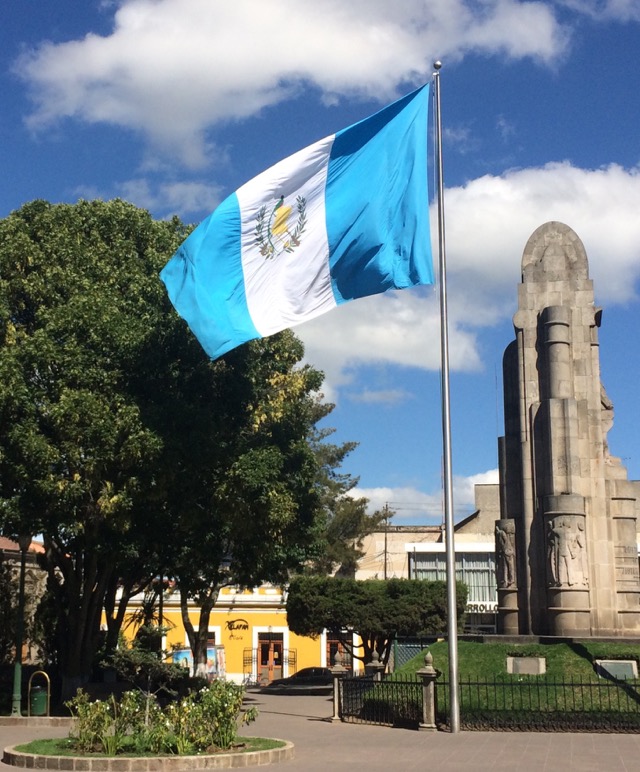
I discovered your blog last week and I am realy enjoying your beautifull pic and comment. Makes me want to go to Guatemala more and more, tks.
Hello Jean-Guy and Lucille. Thanks for reading the blog. Yes, Guatemala is really an interesting place. Since you’ve already been to Mexico, it’s probably not much harder to keep going south to Guatemala!
Gorgeous photos, can’t wait to get back down there and explore some more!
Thanks for the comment! We really enjoyed the highlands. With your new motor, you’ll definitely be able to explore them 🙂 Looking forward to seeing where Penny takes you in Guatemala.
I love that you guys spent some time learning how to weave! Loving all of the photos!
I’m grateful that I tried it, but also grateful that I don’t need to do it for a living. Manual labour is not my thing 🙂
I’m really enjoying the pictures and your travel comments
Glad you’re enjoying the blog. Gregor and I really enjoyed Guatemala – it’s a great place to explore.